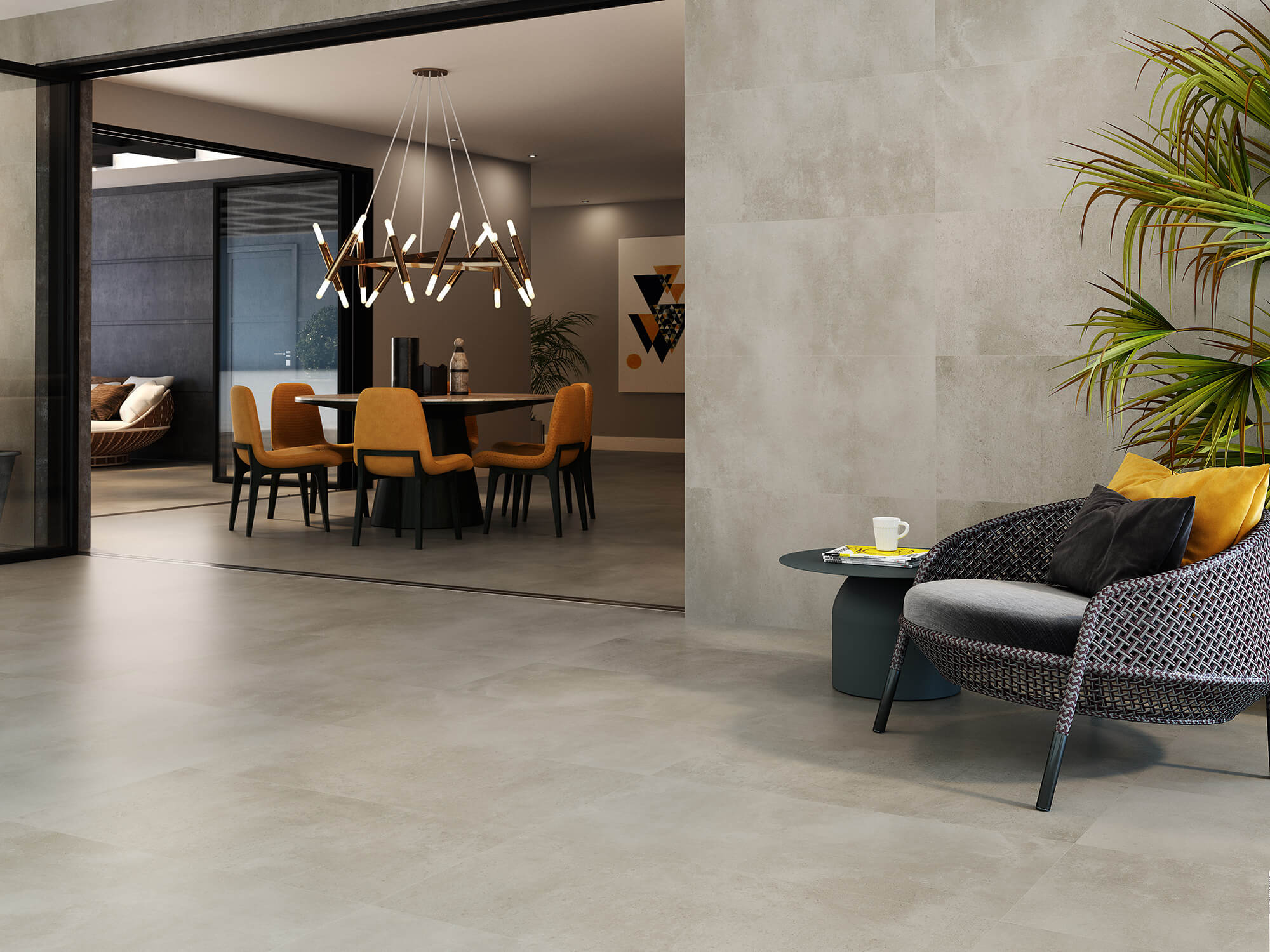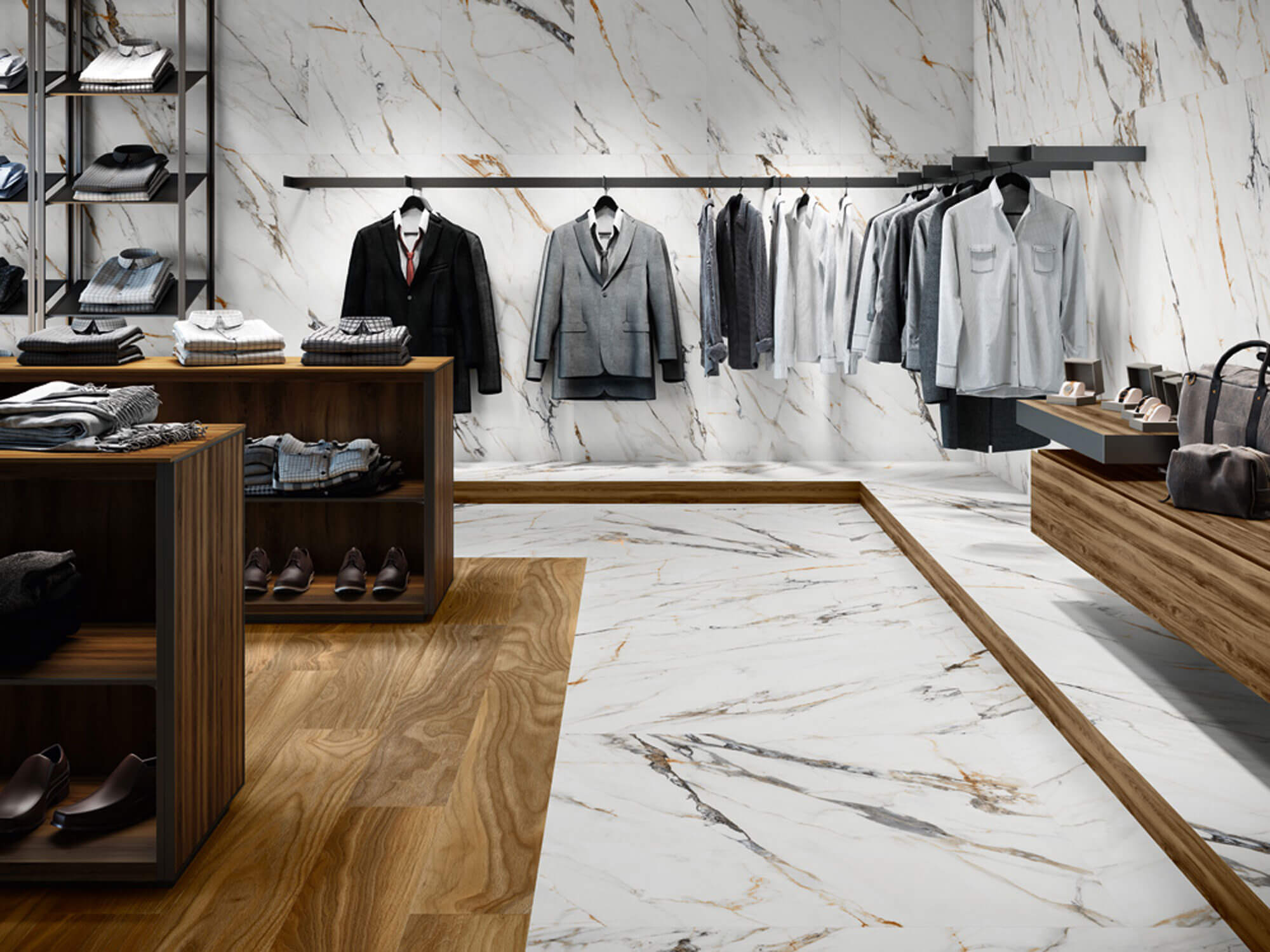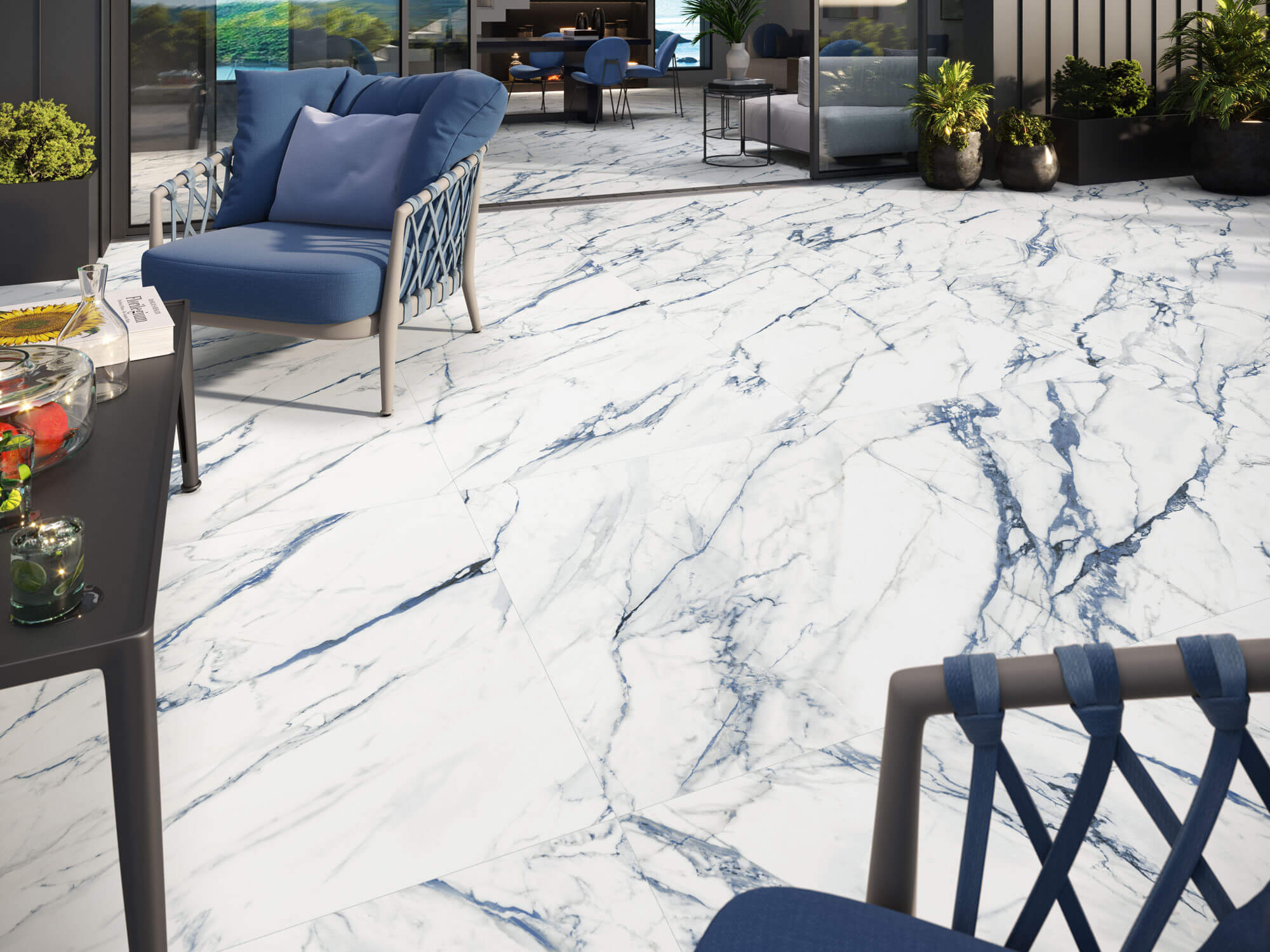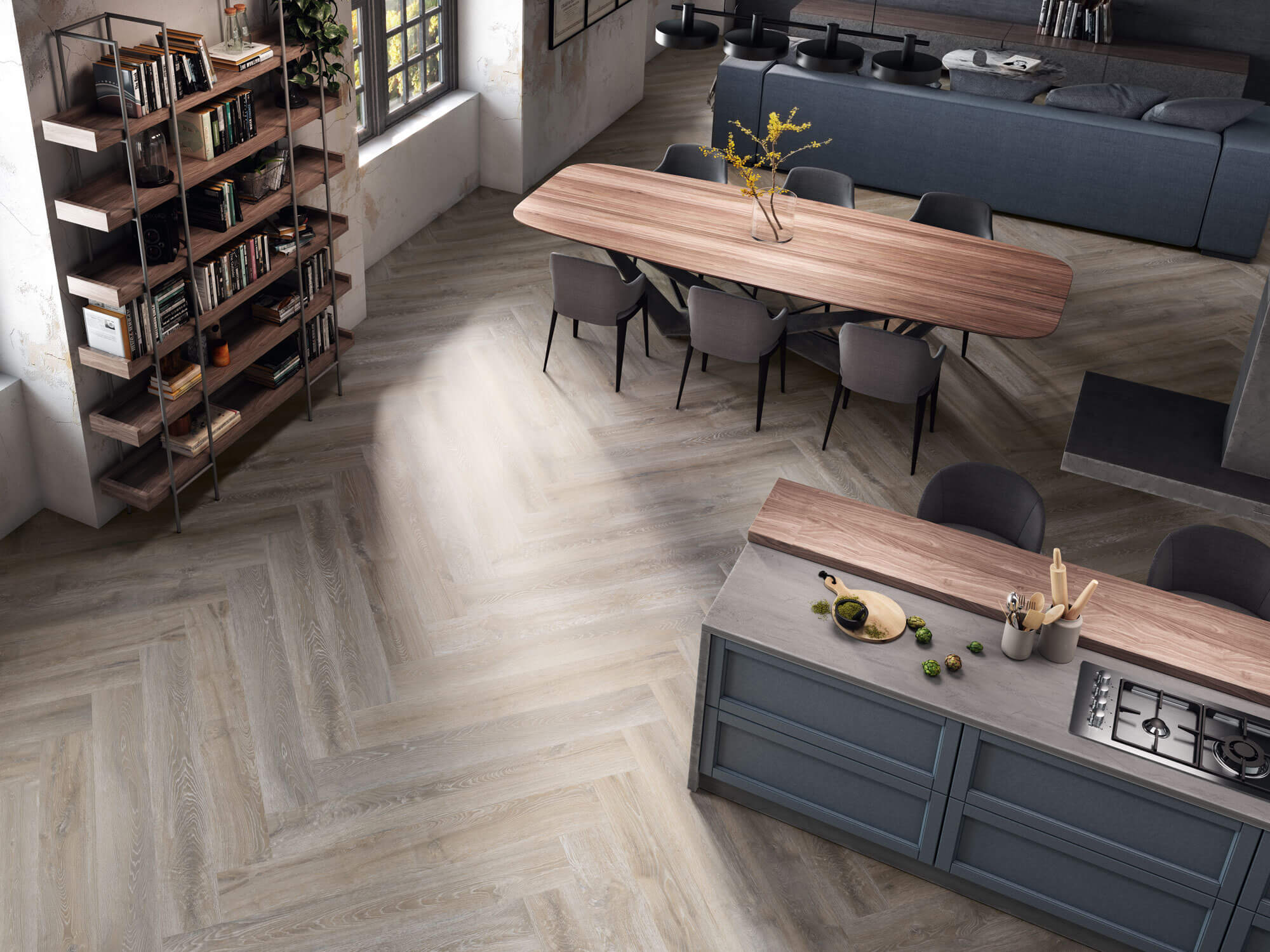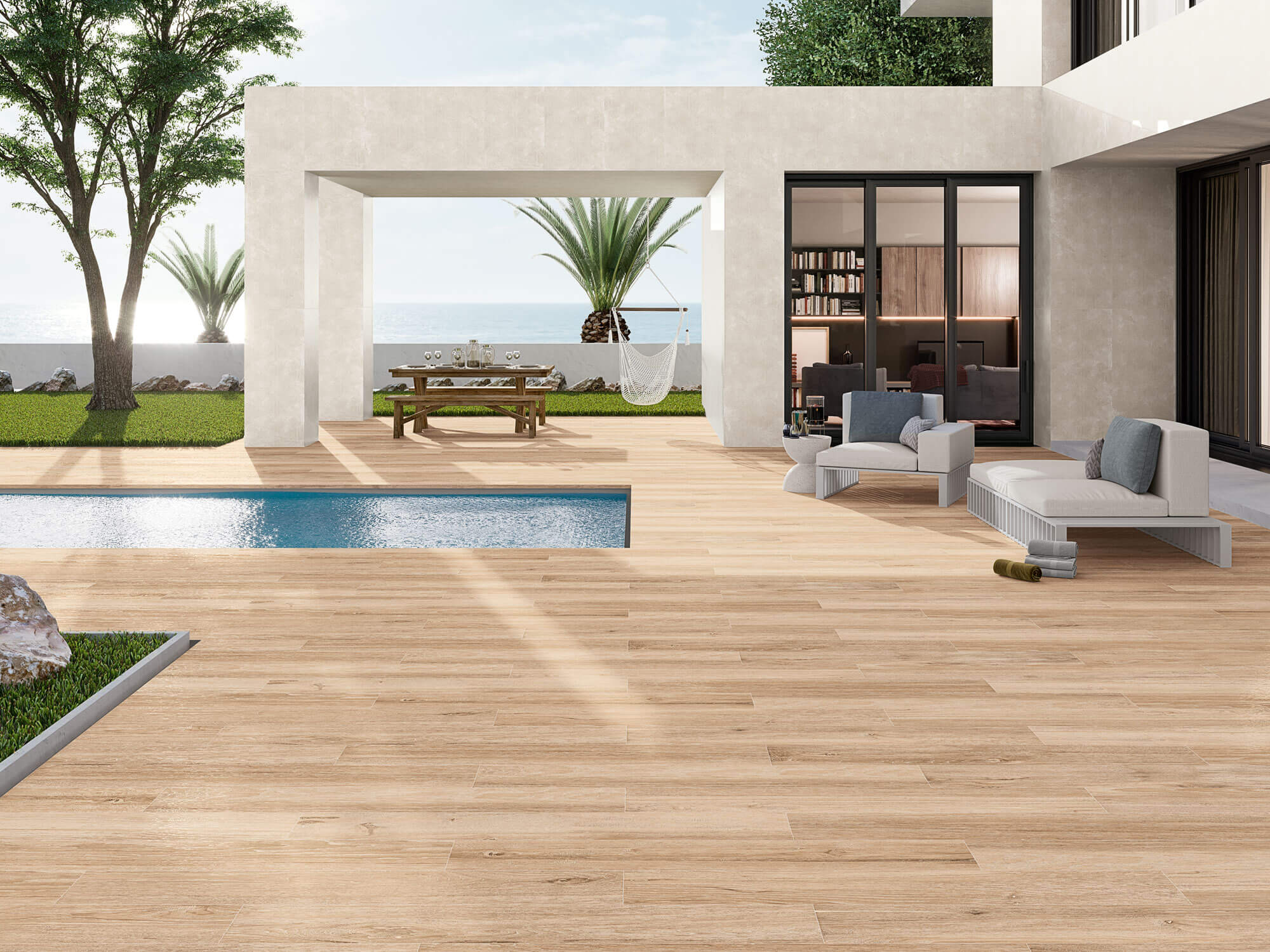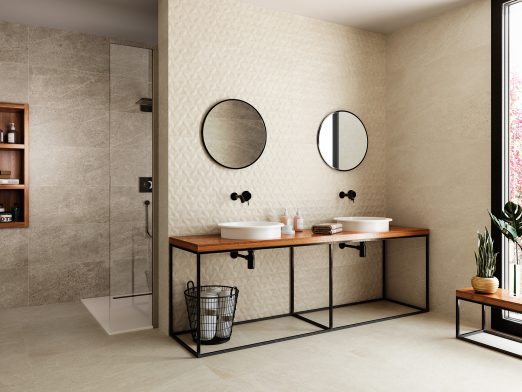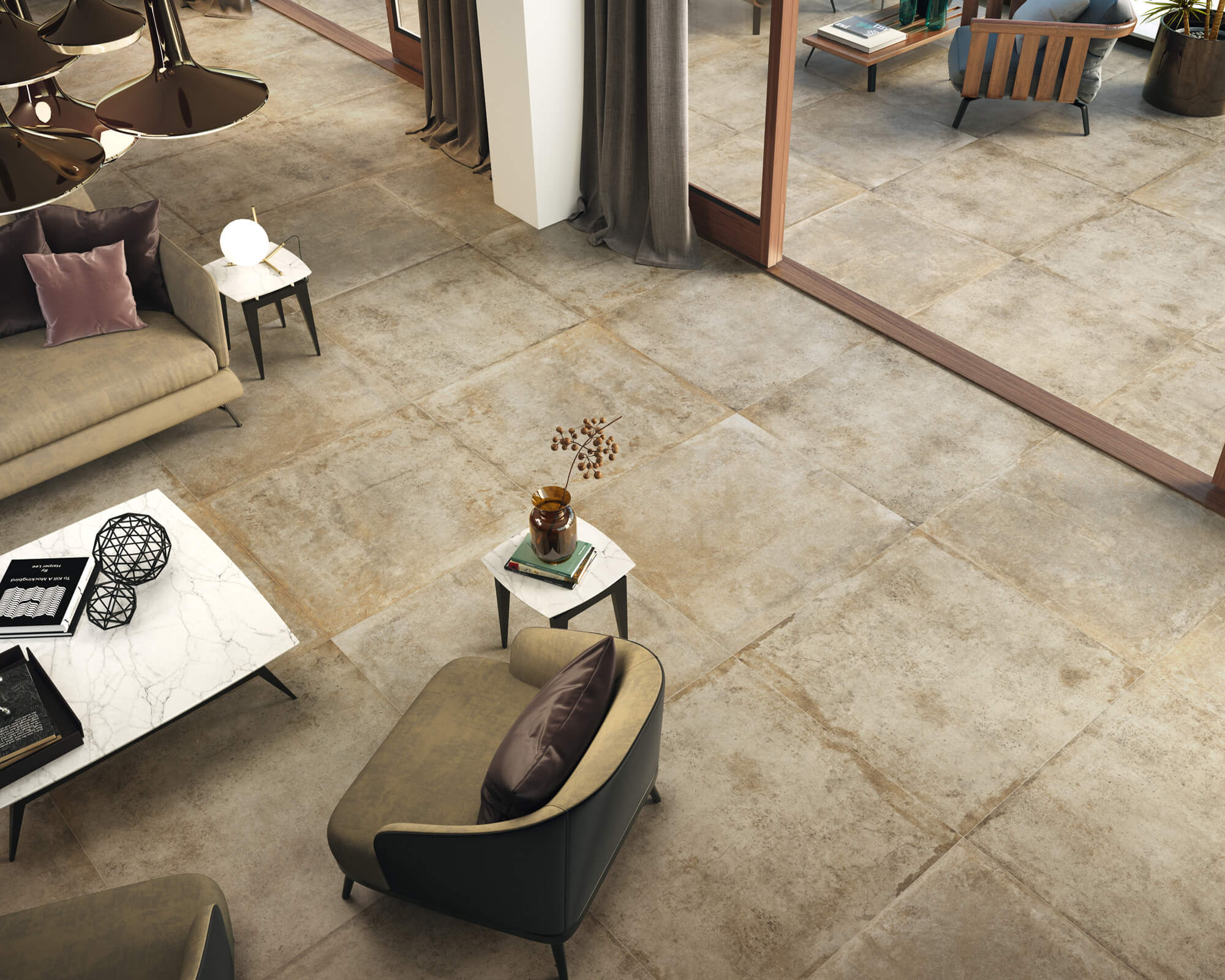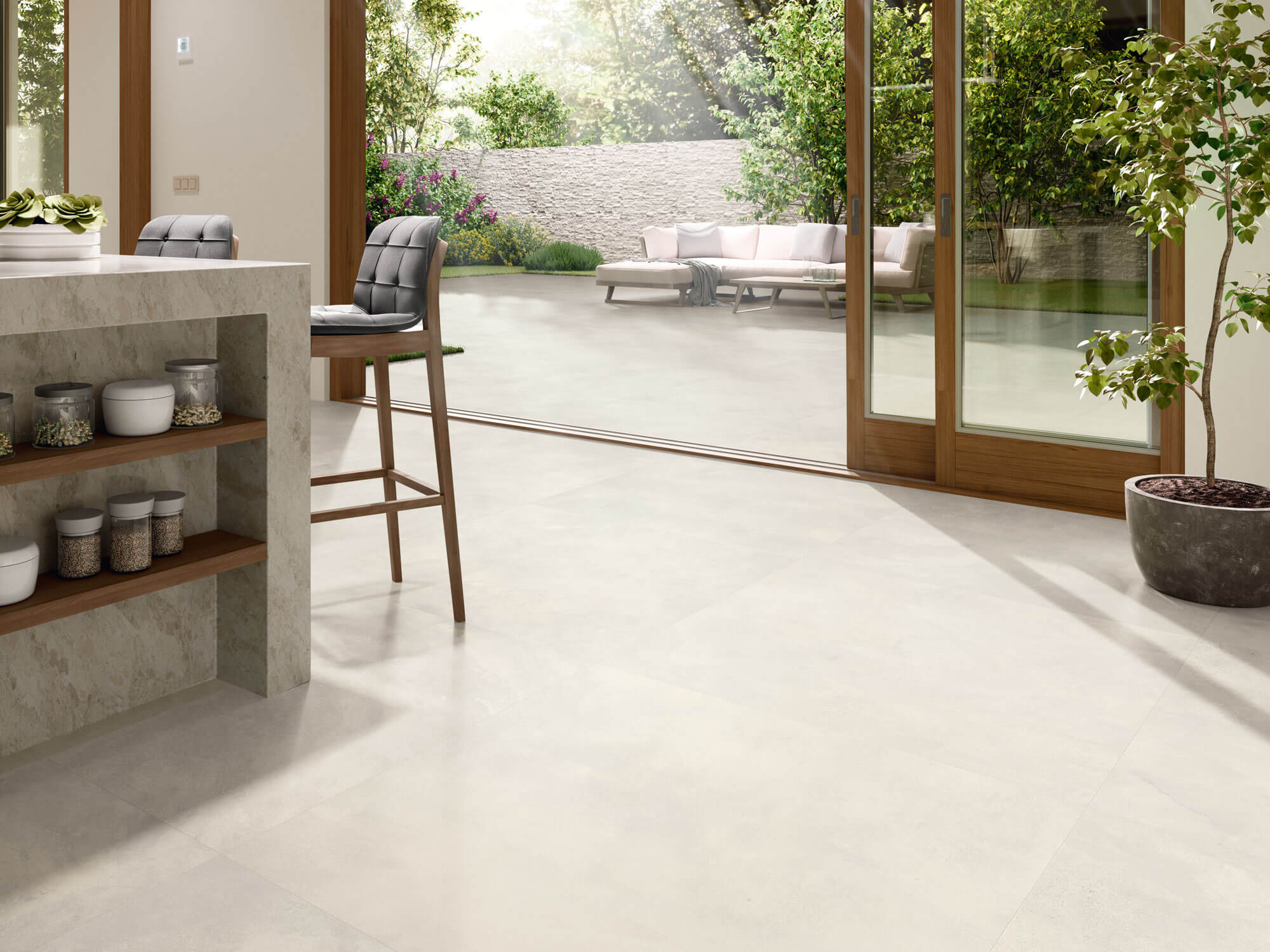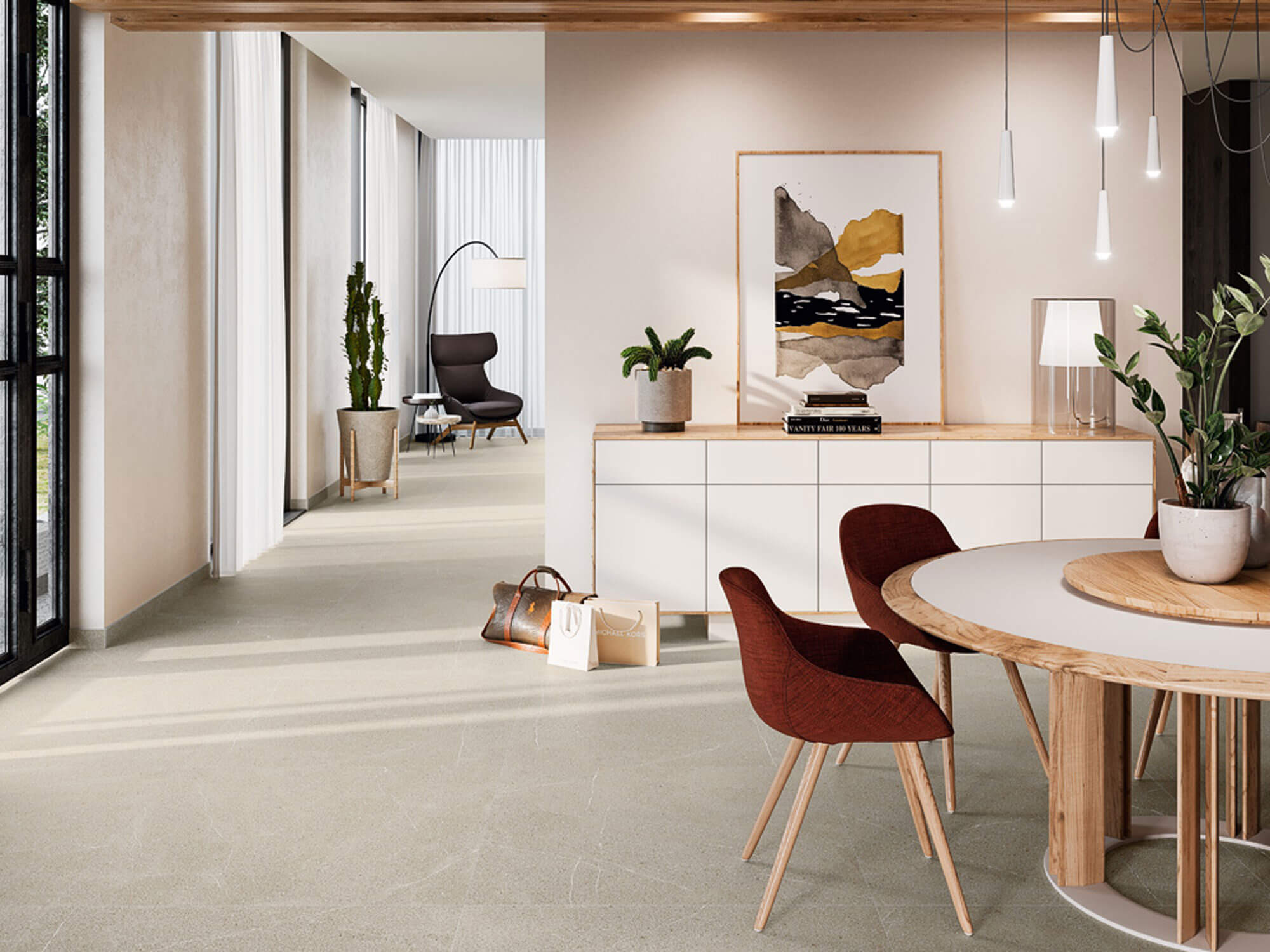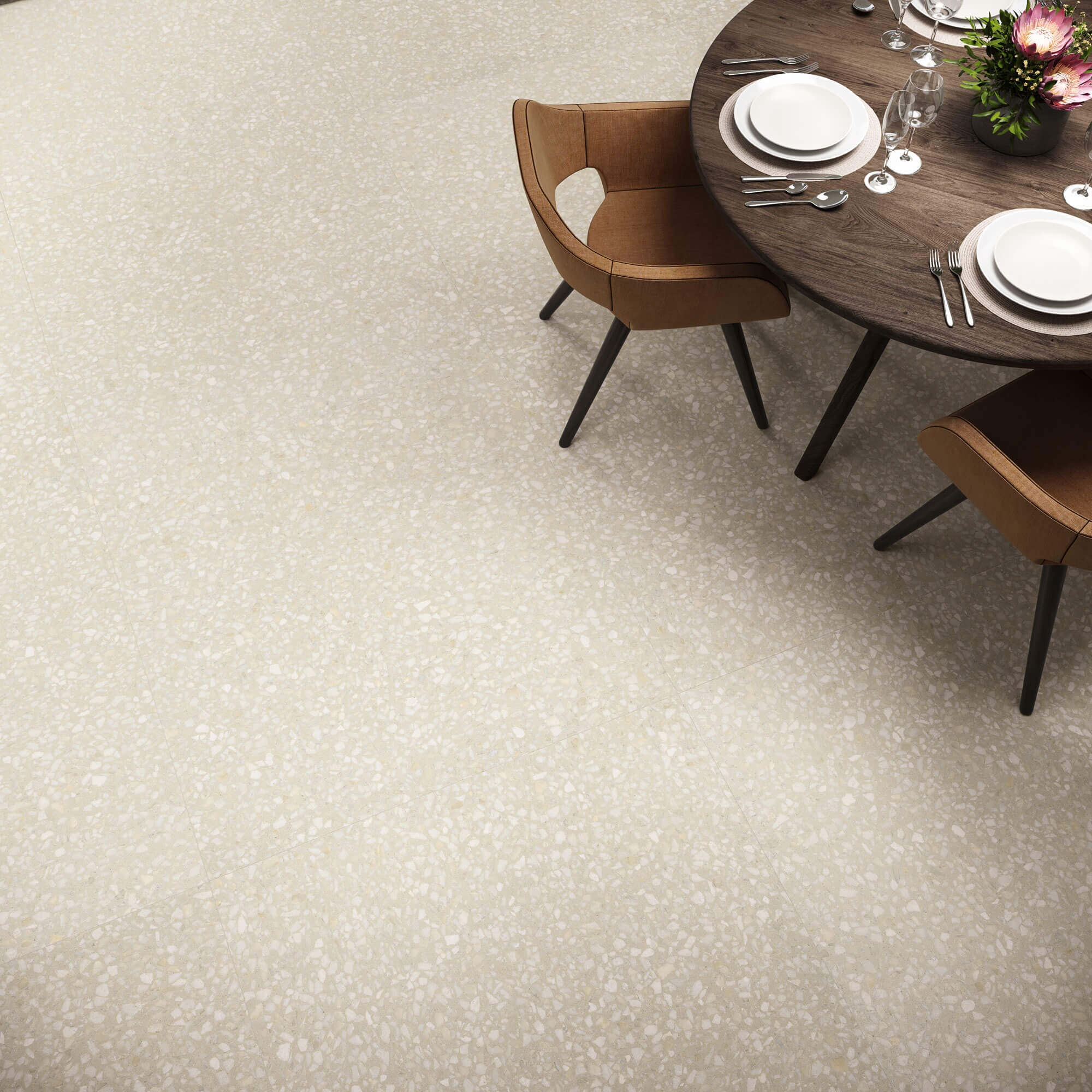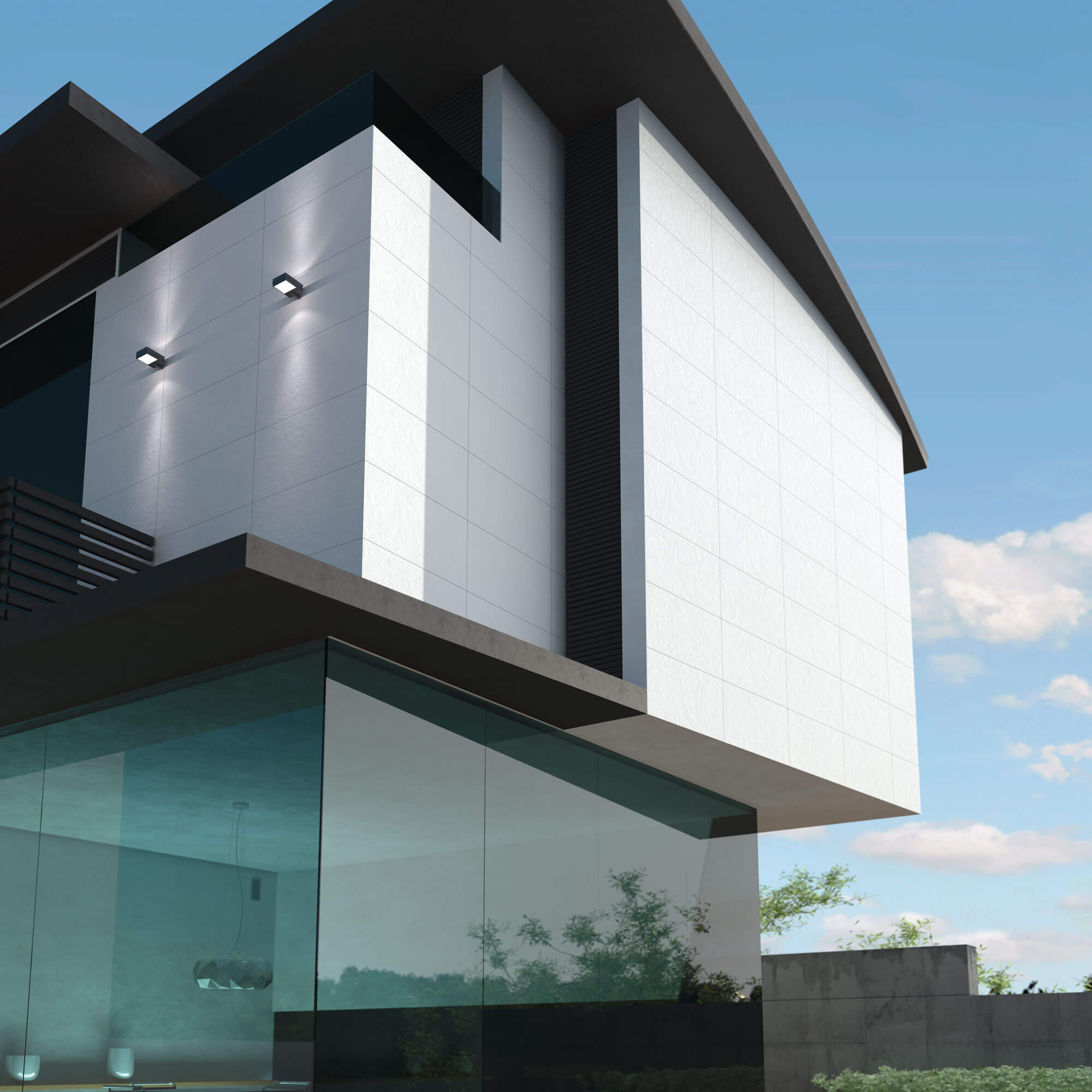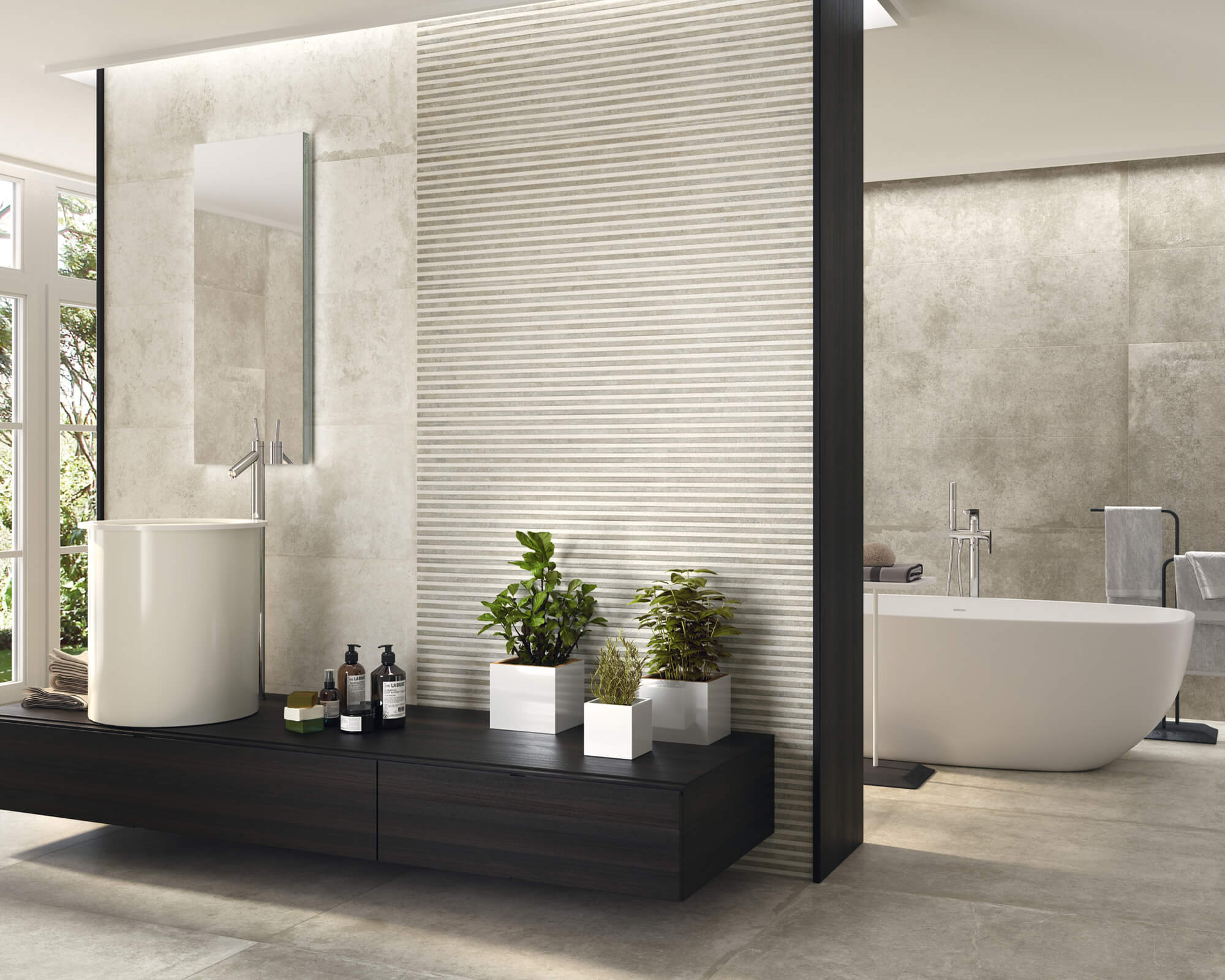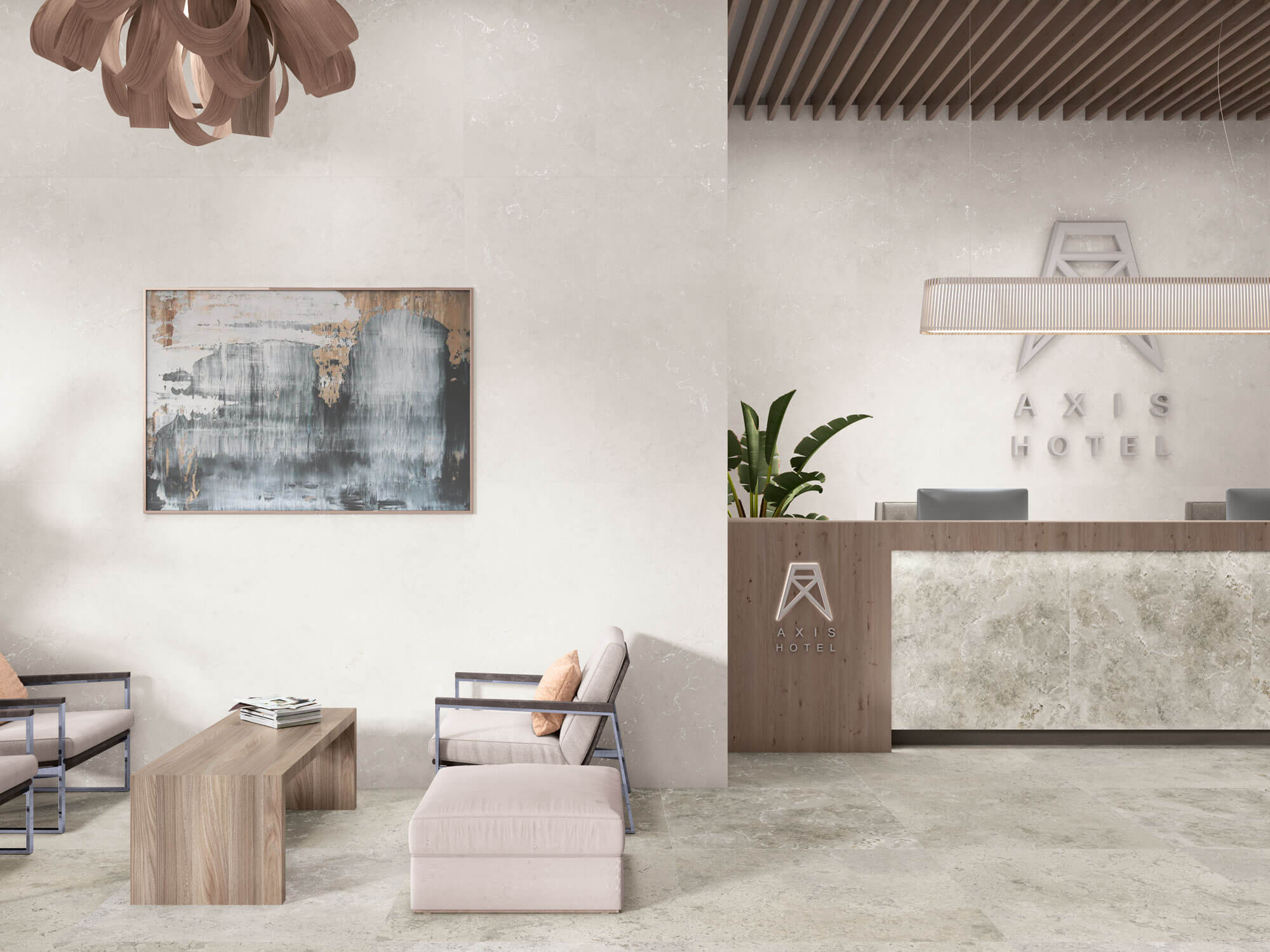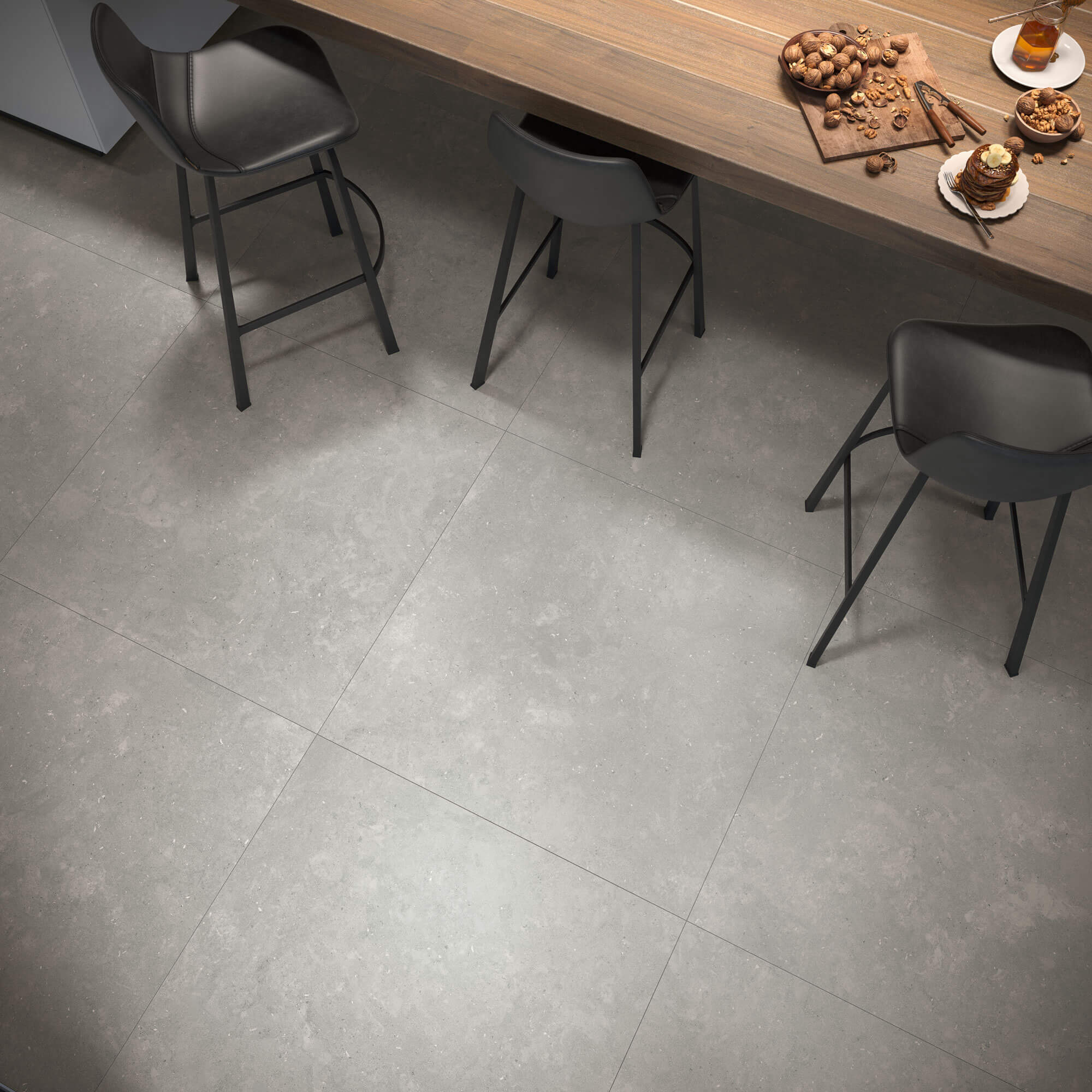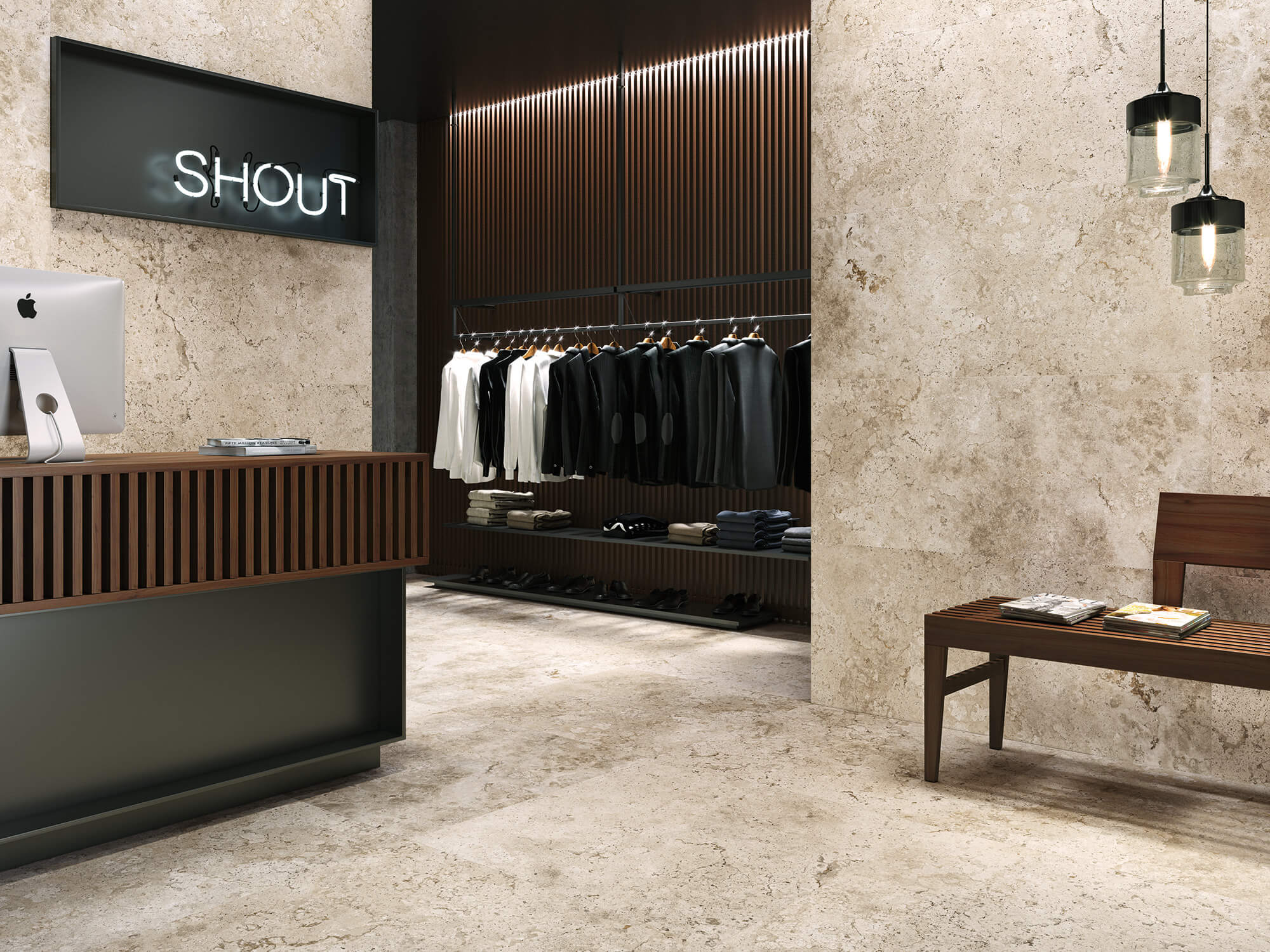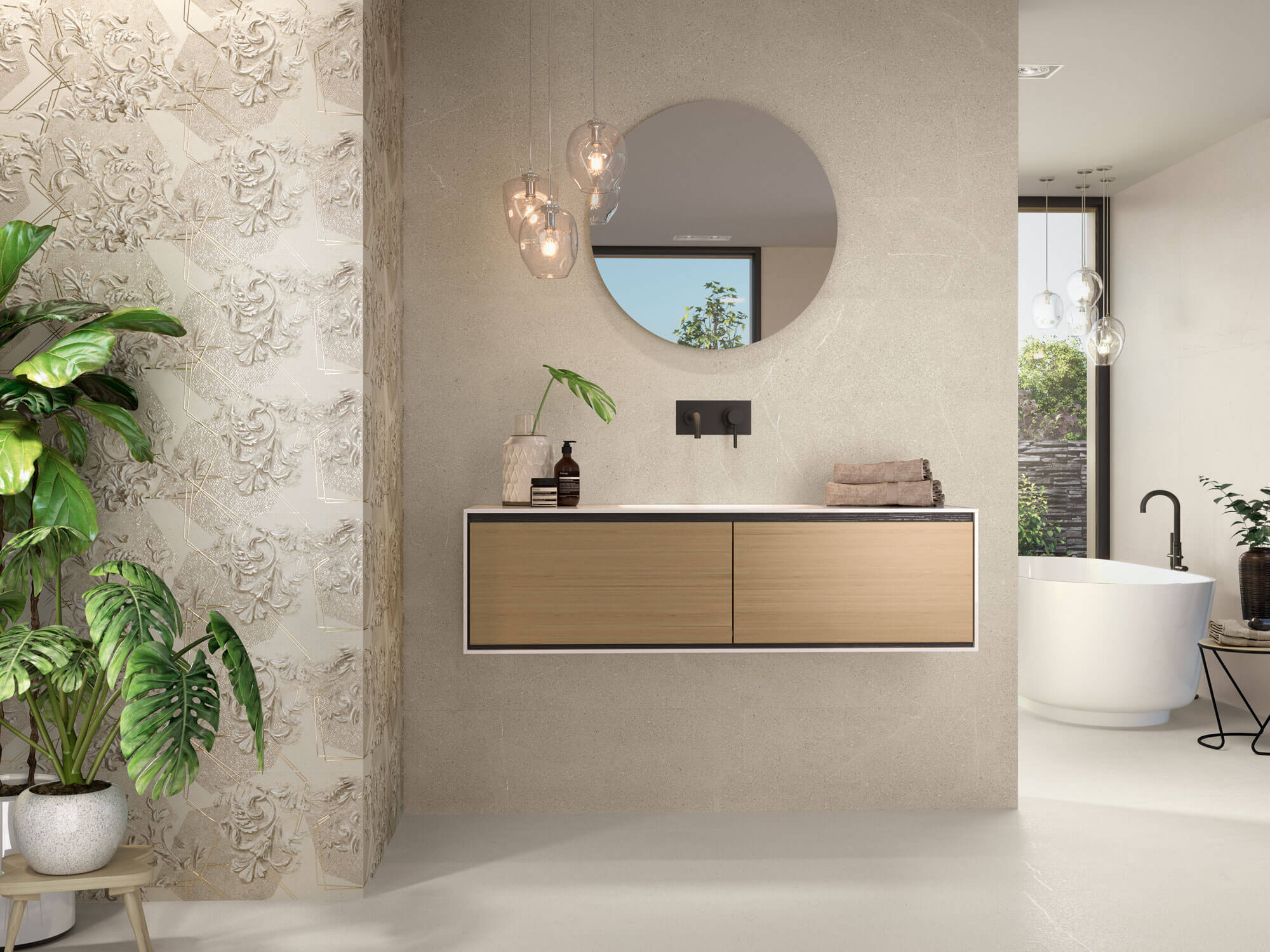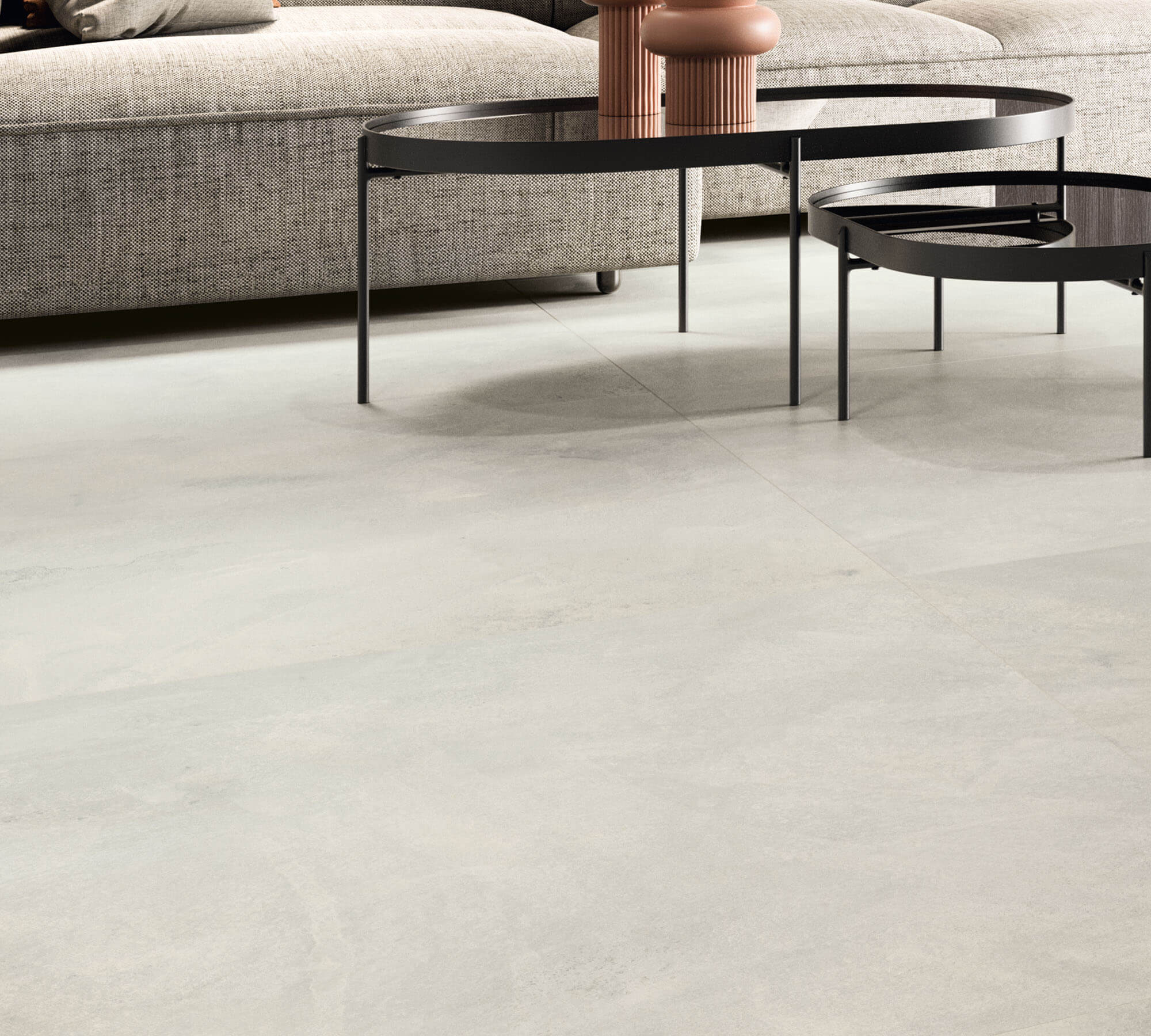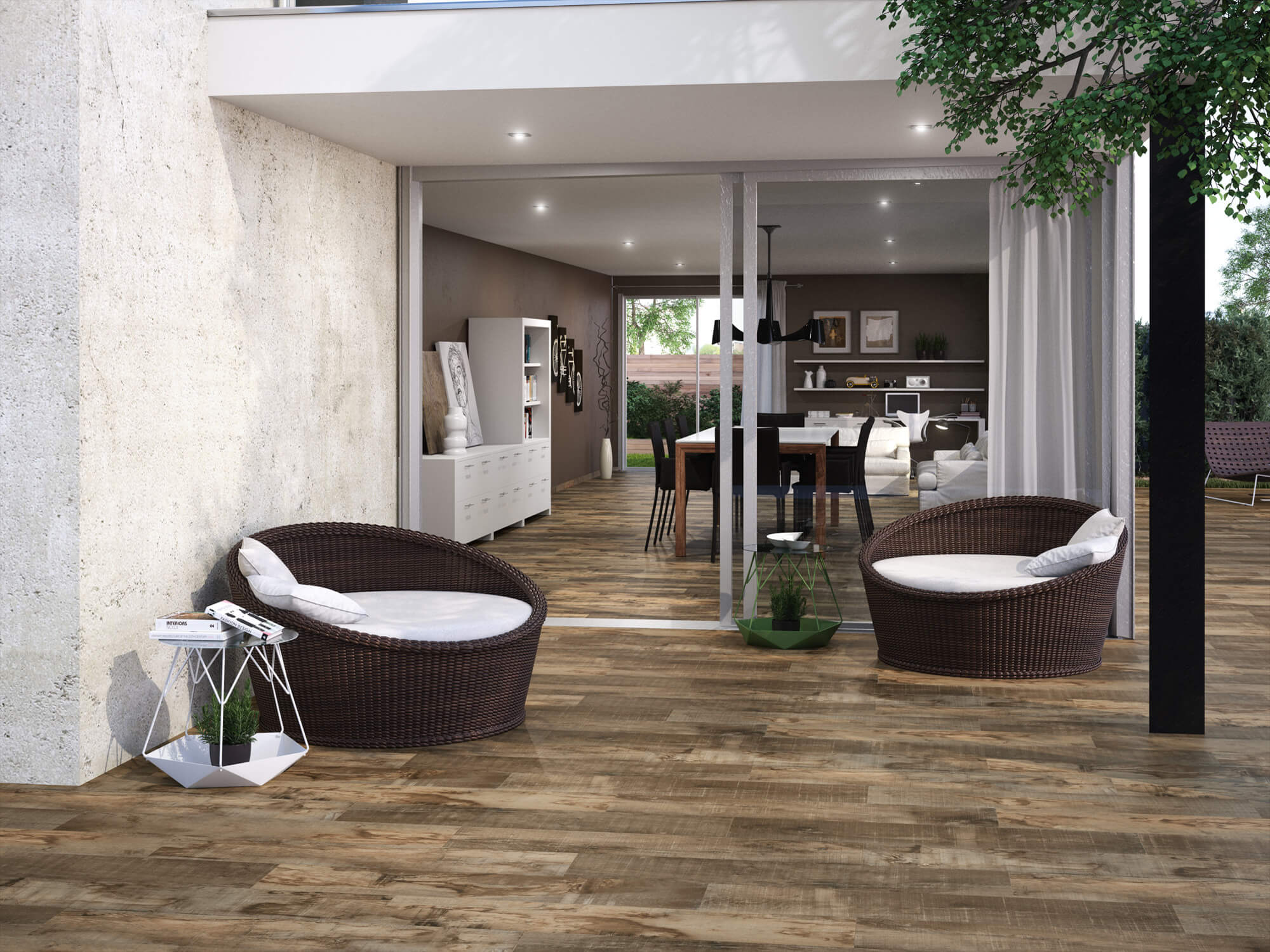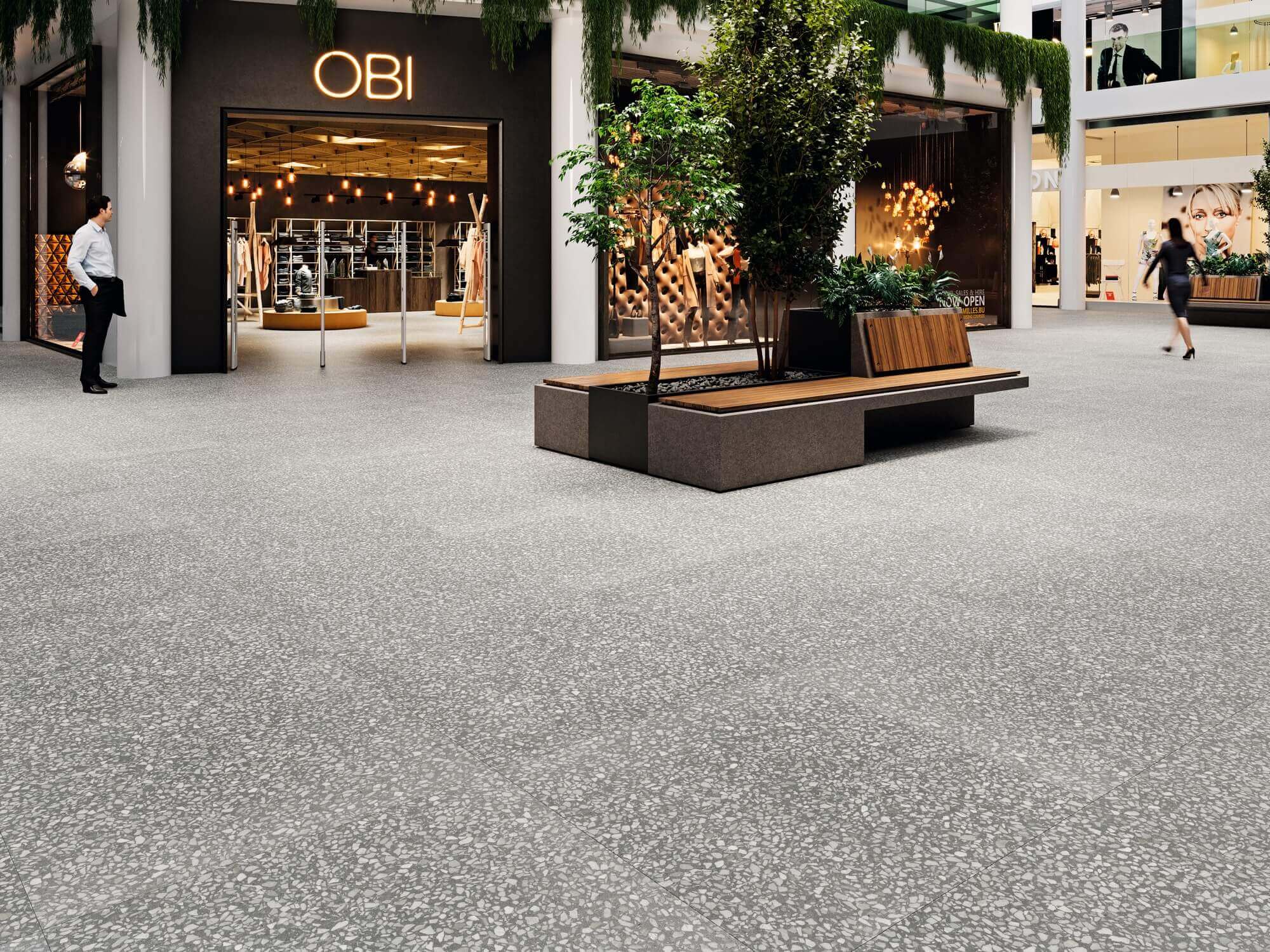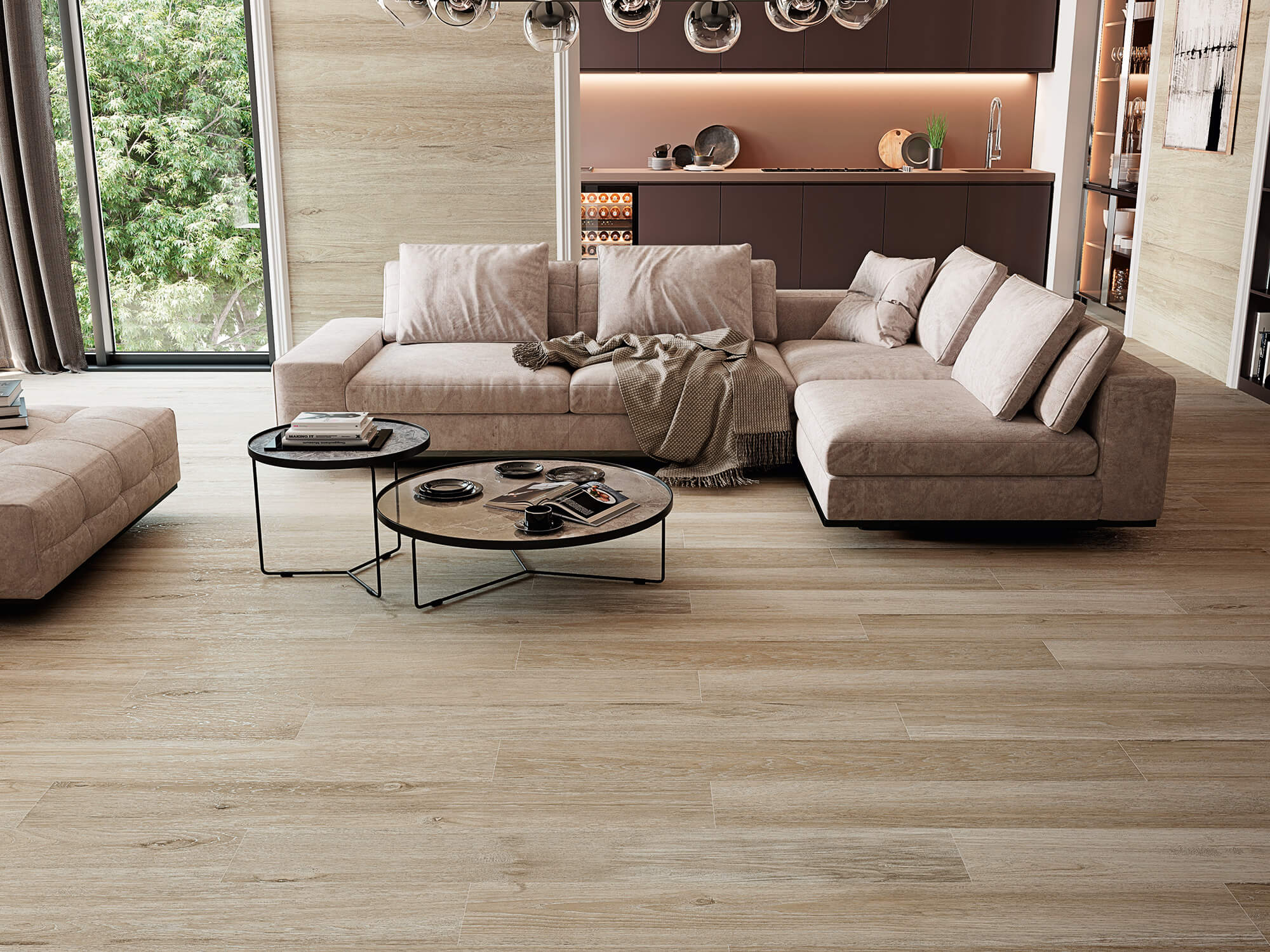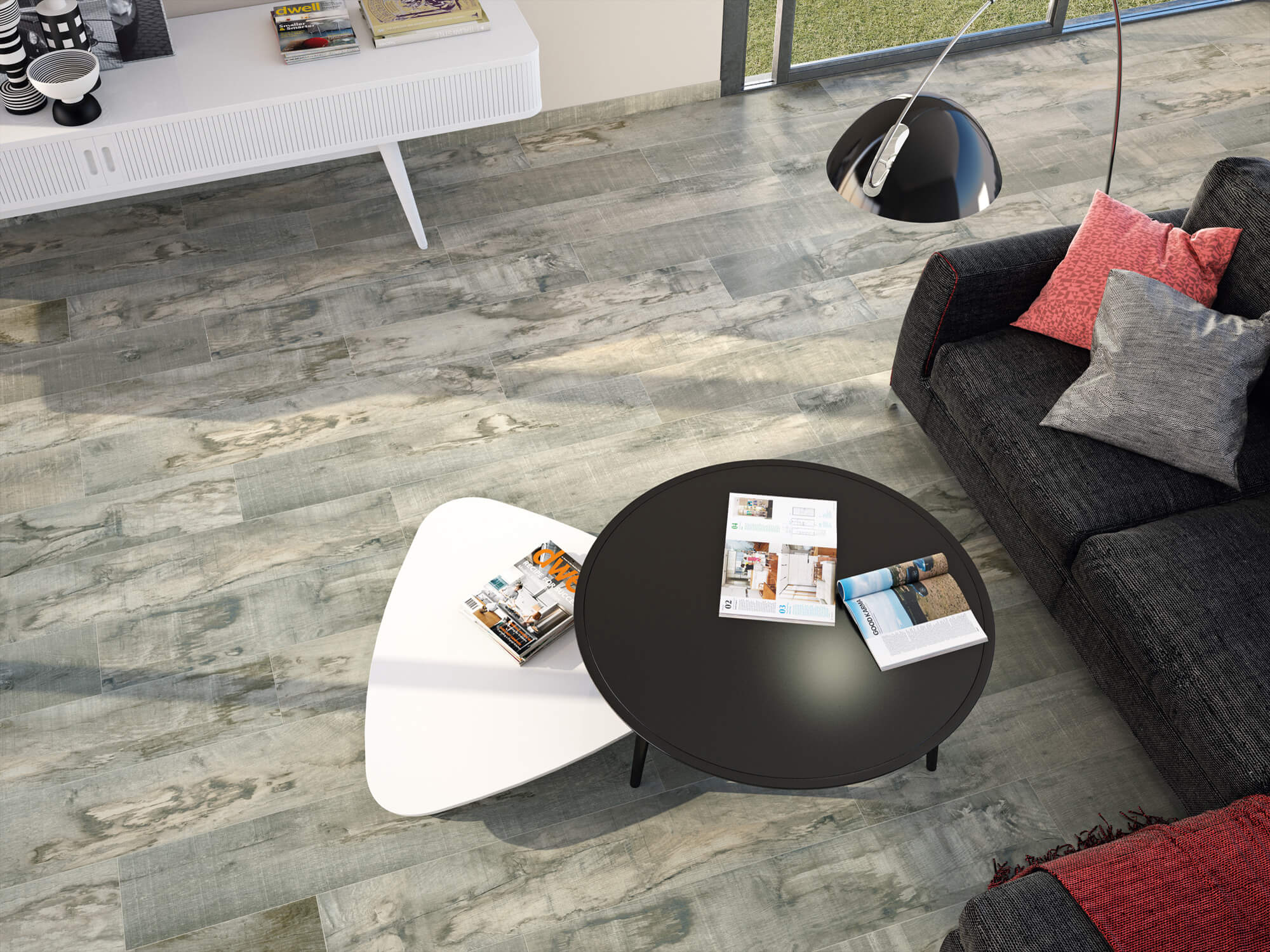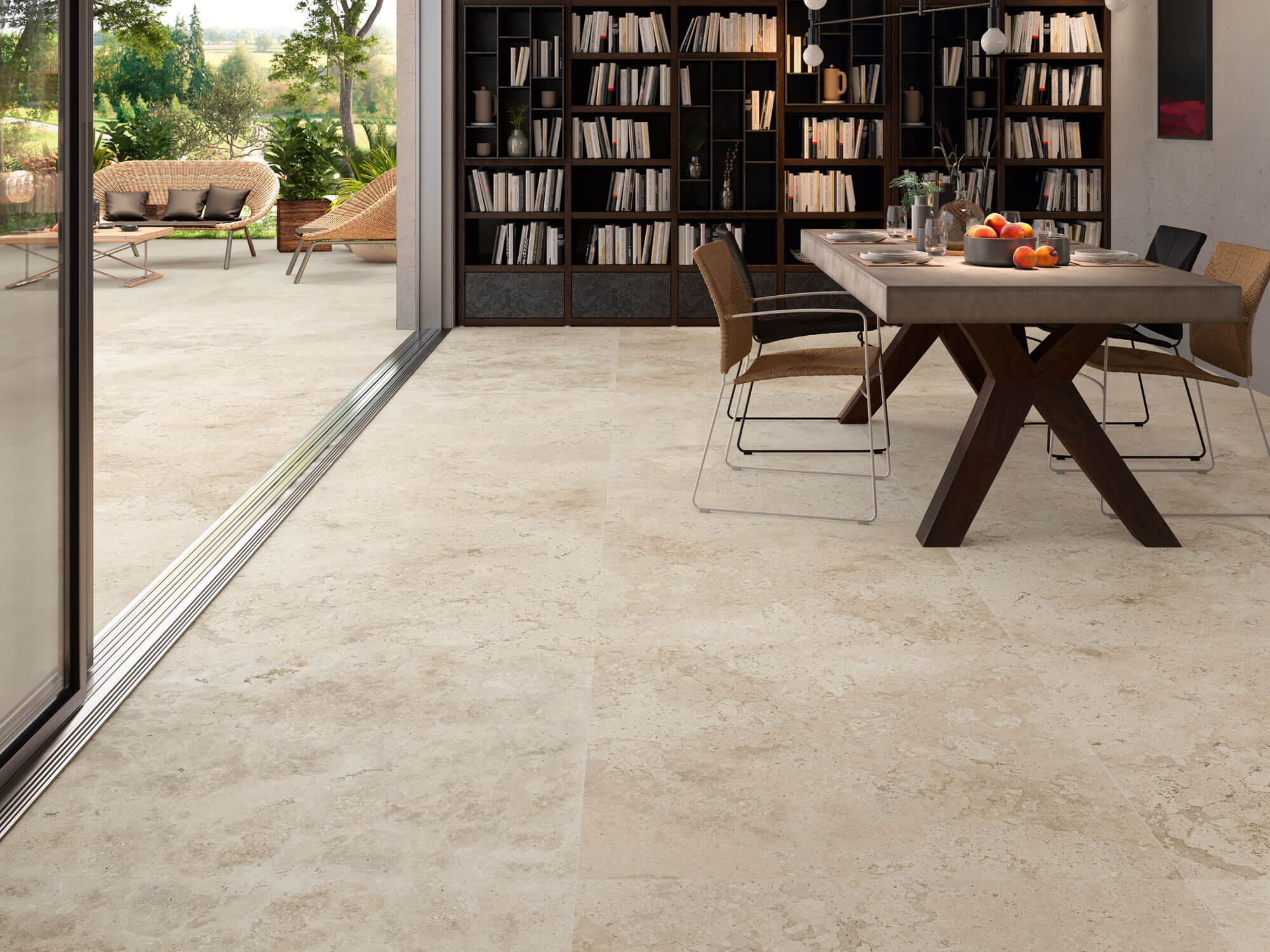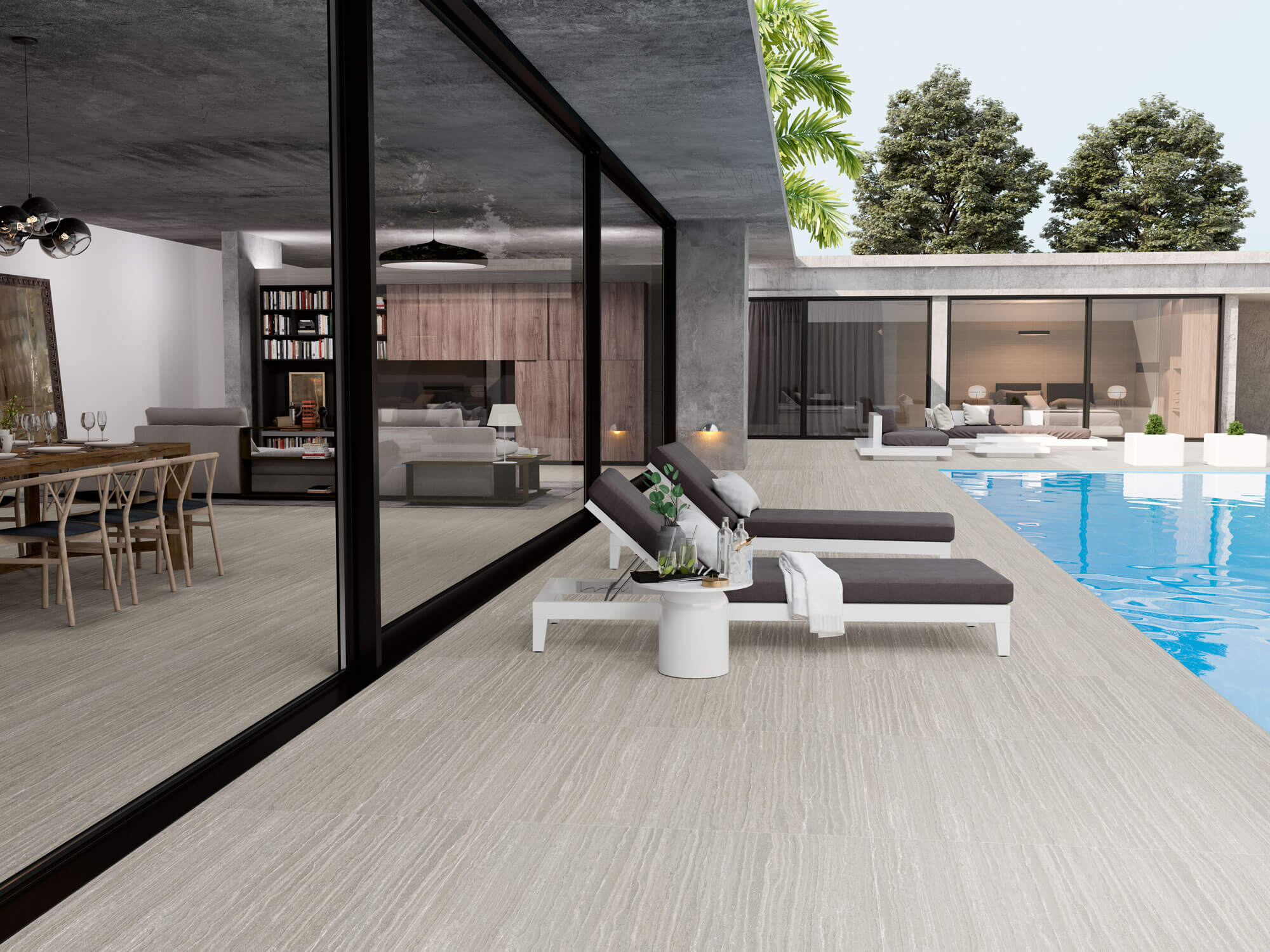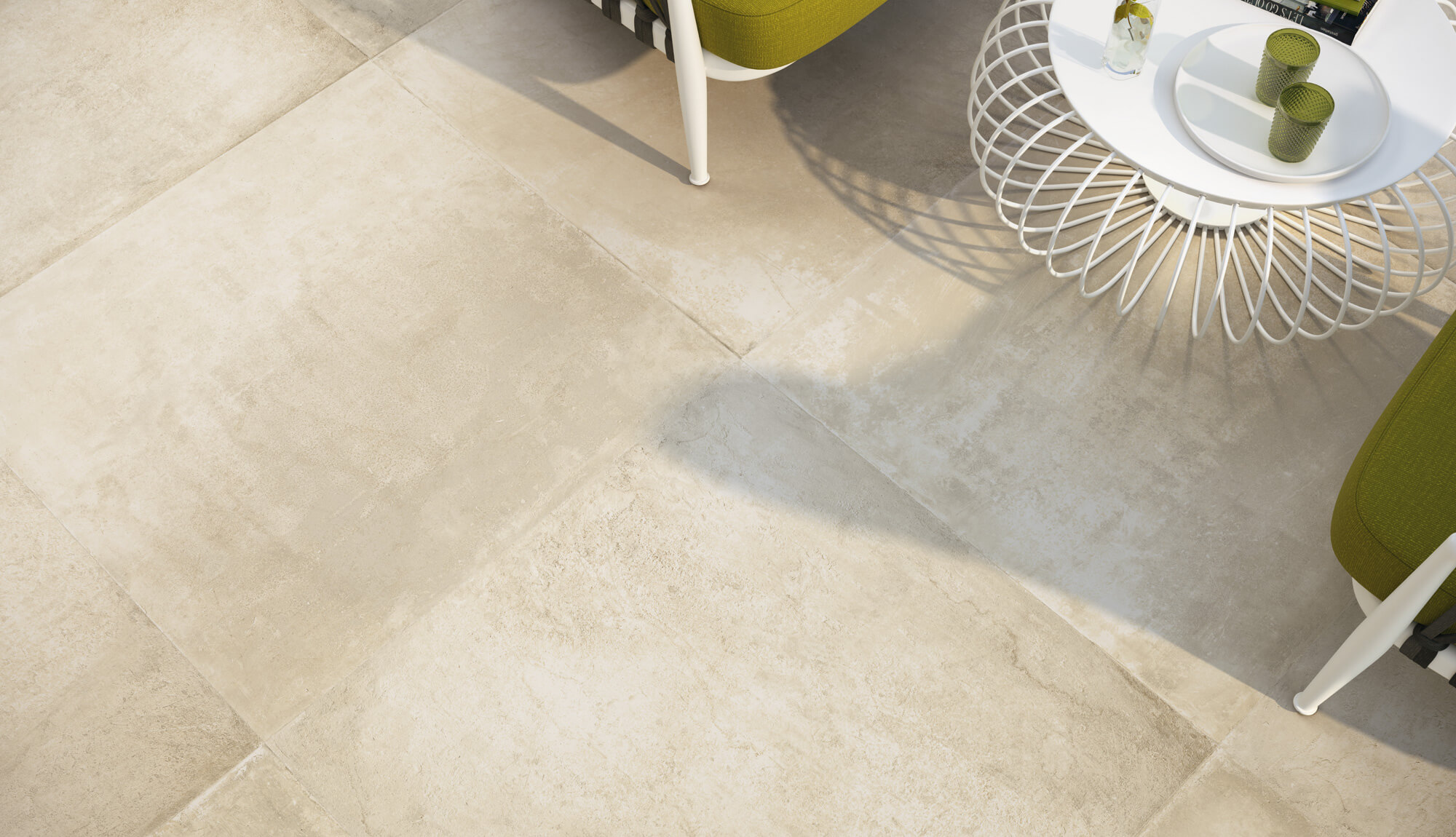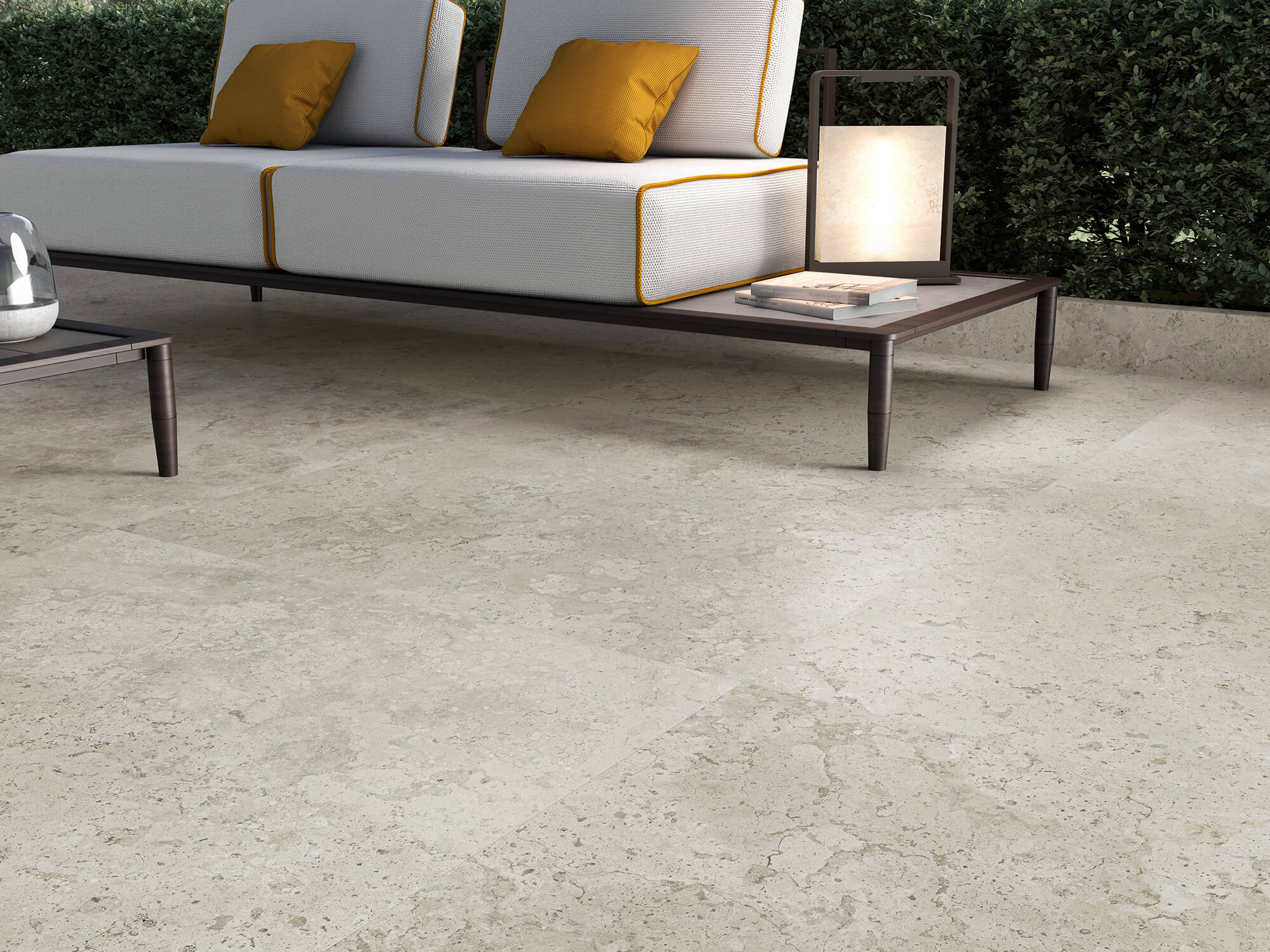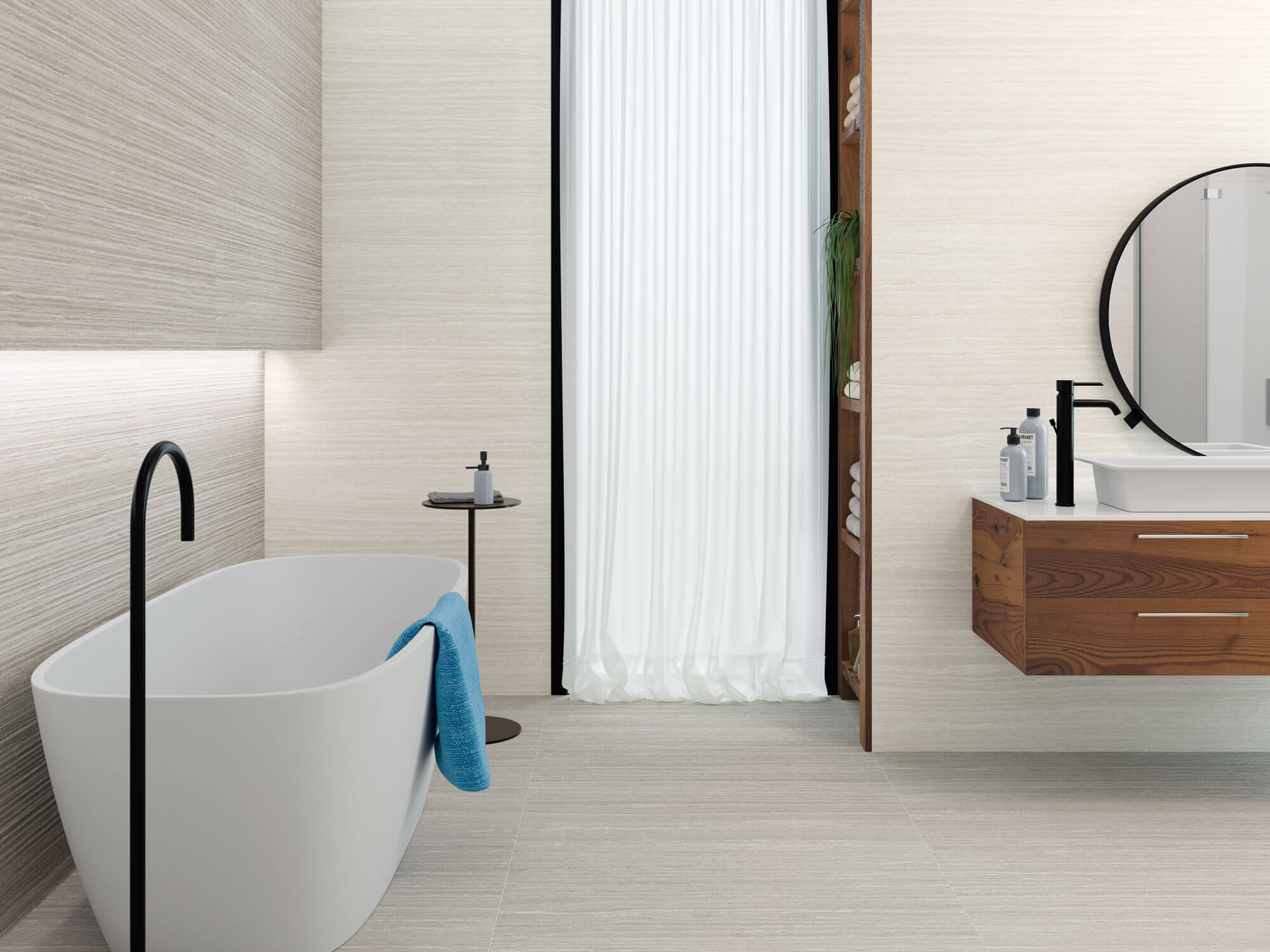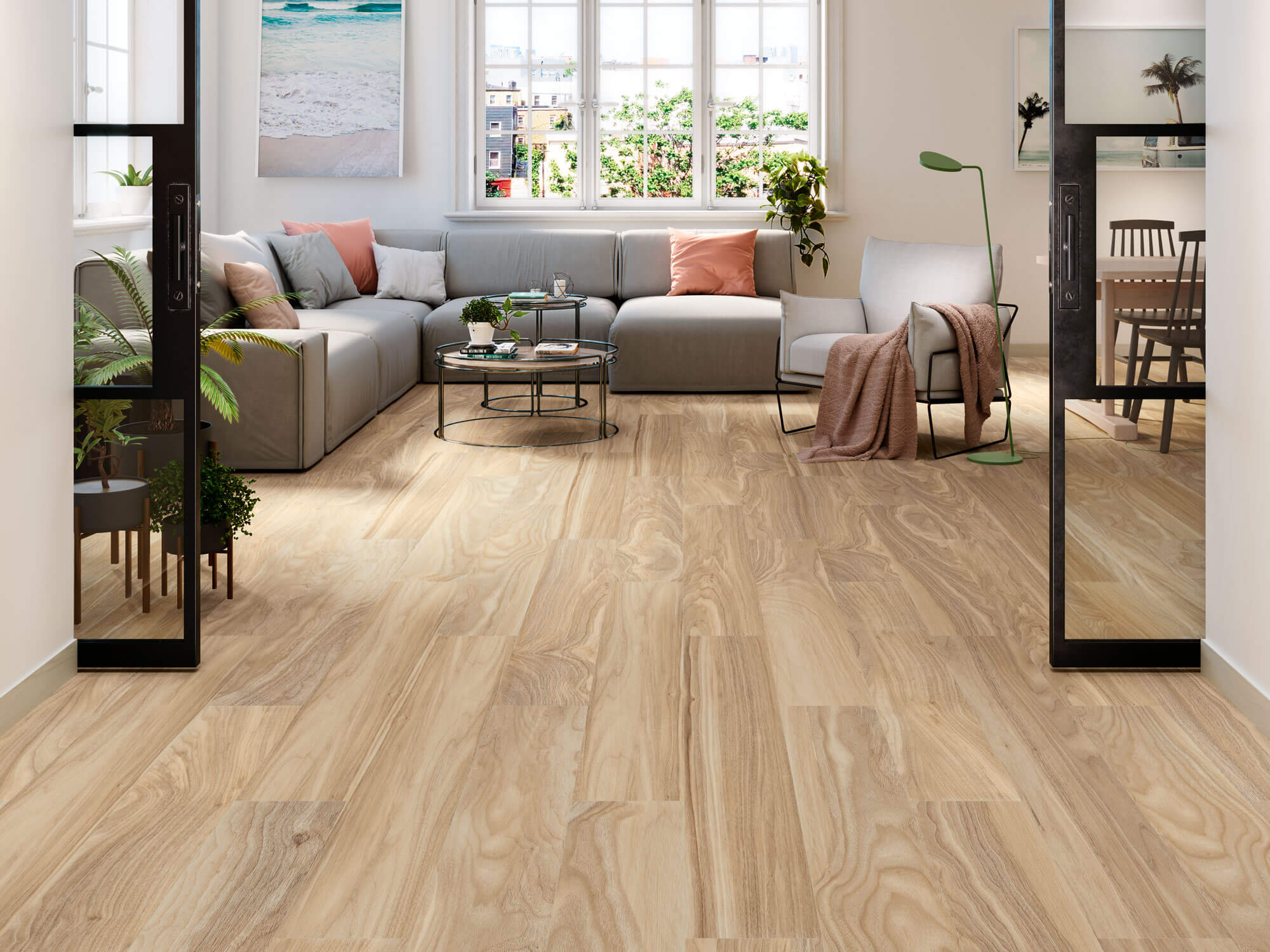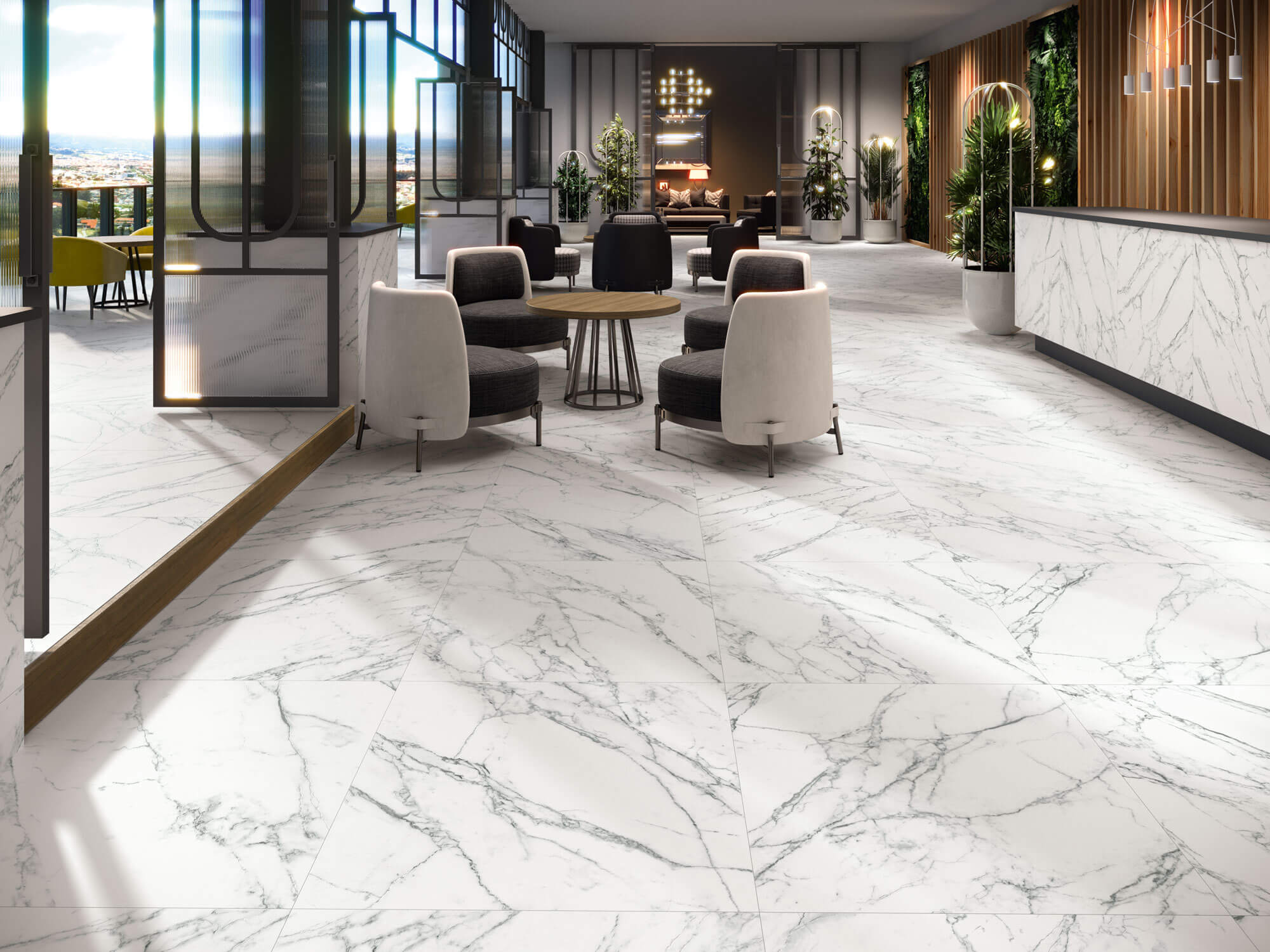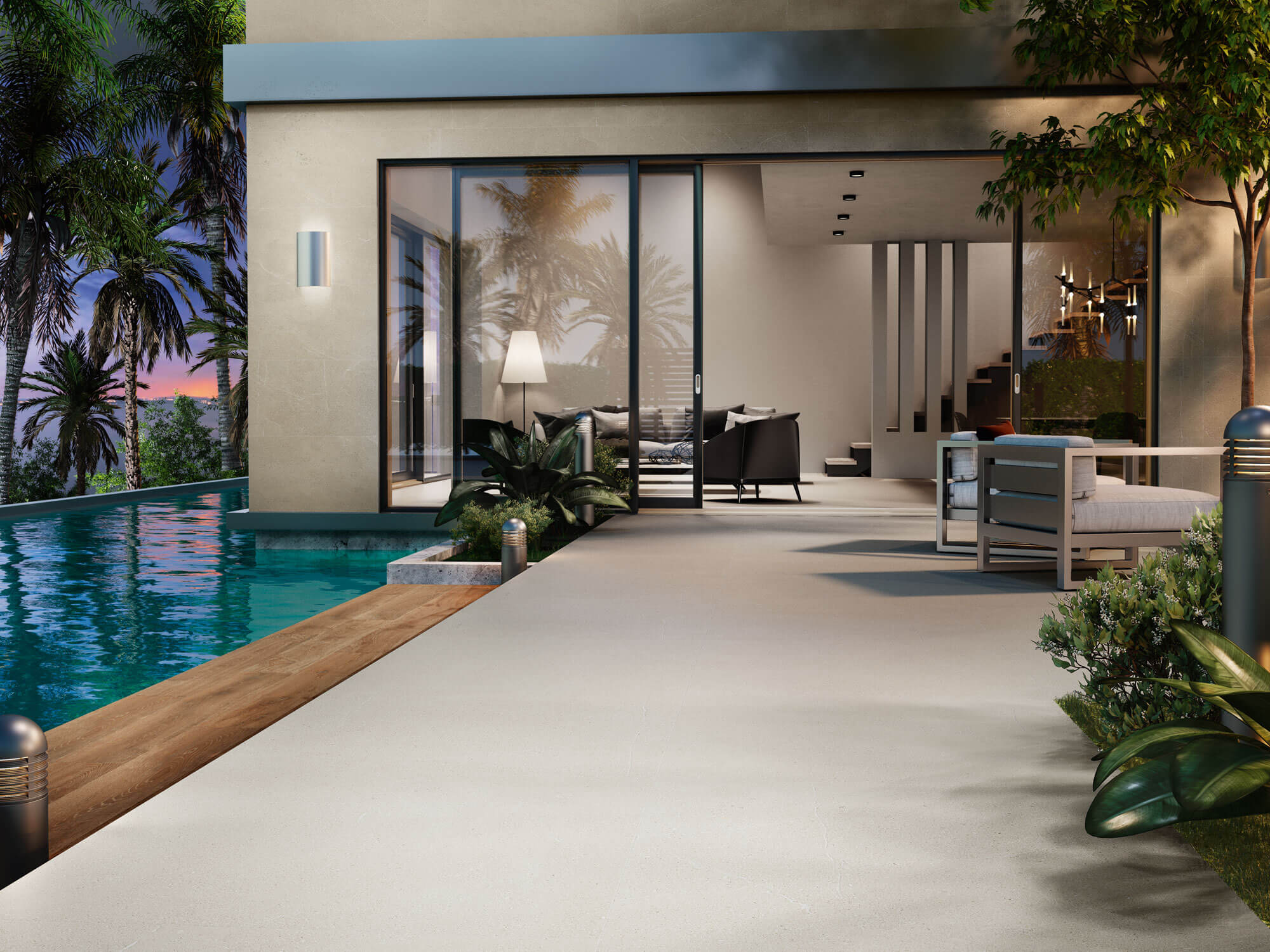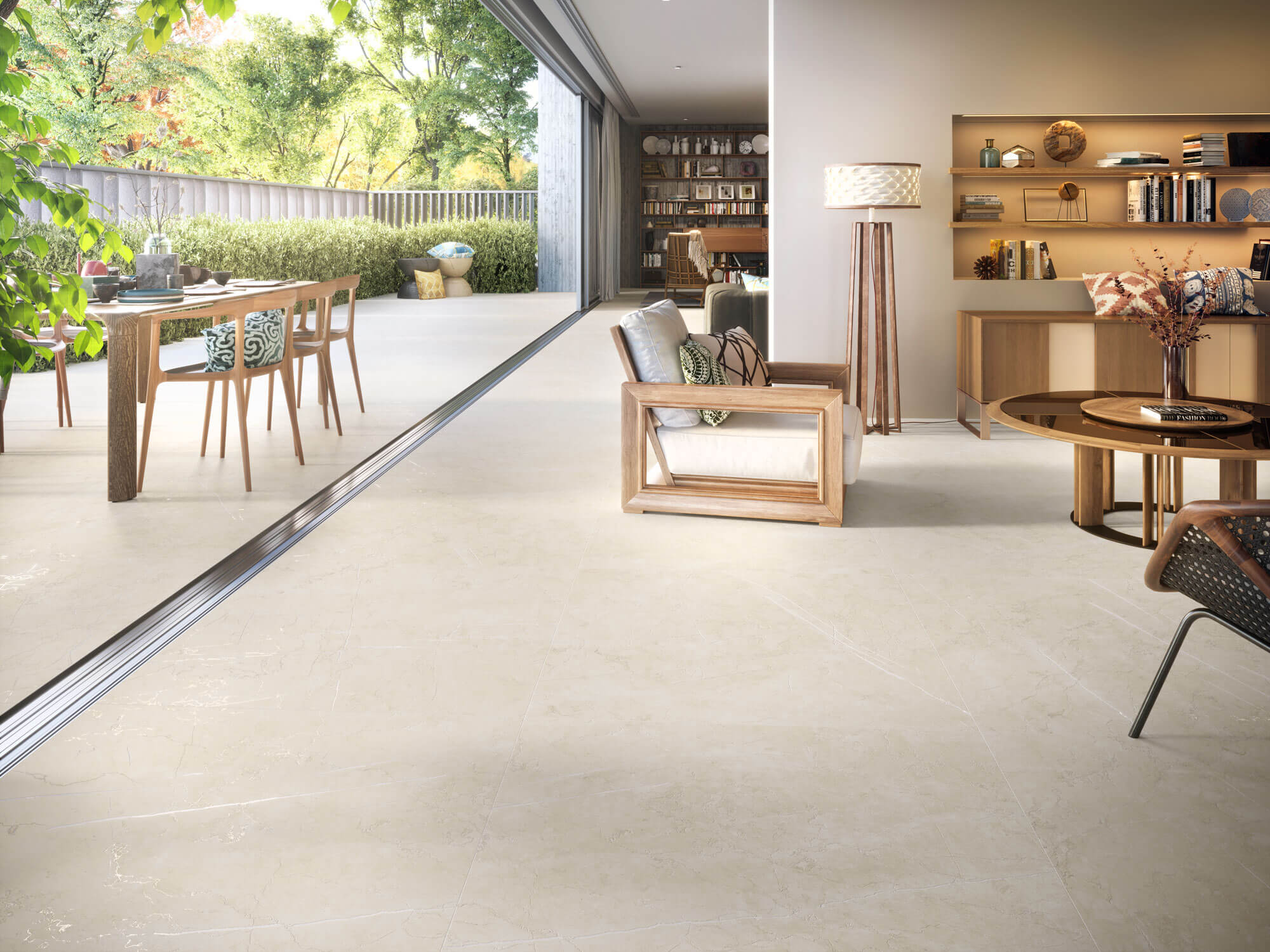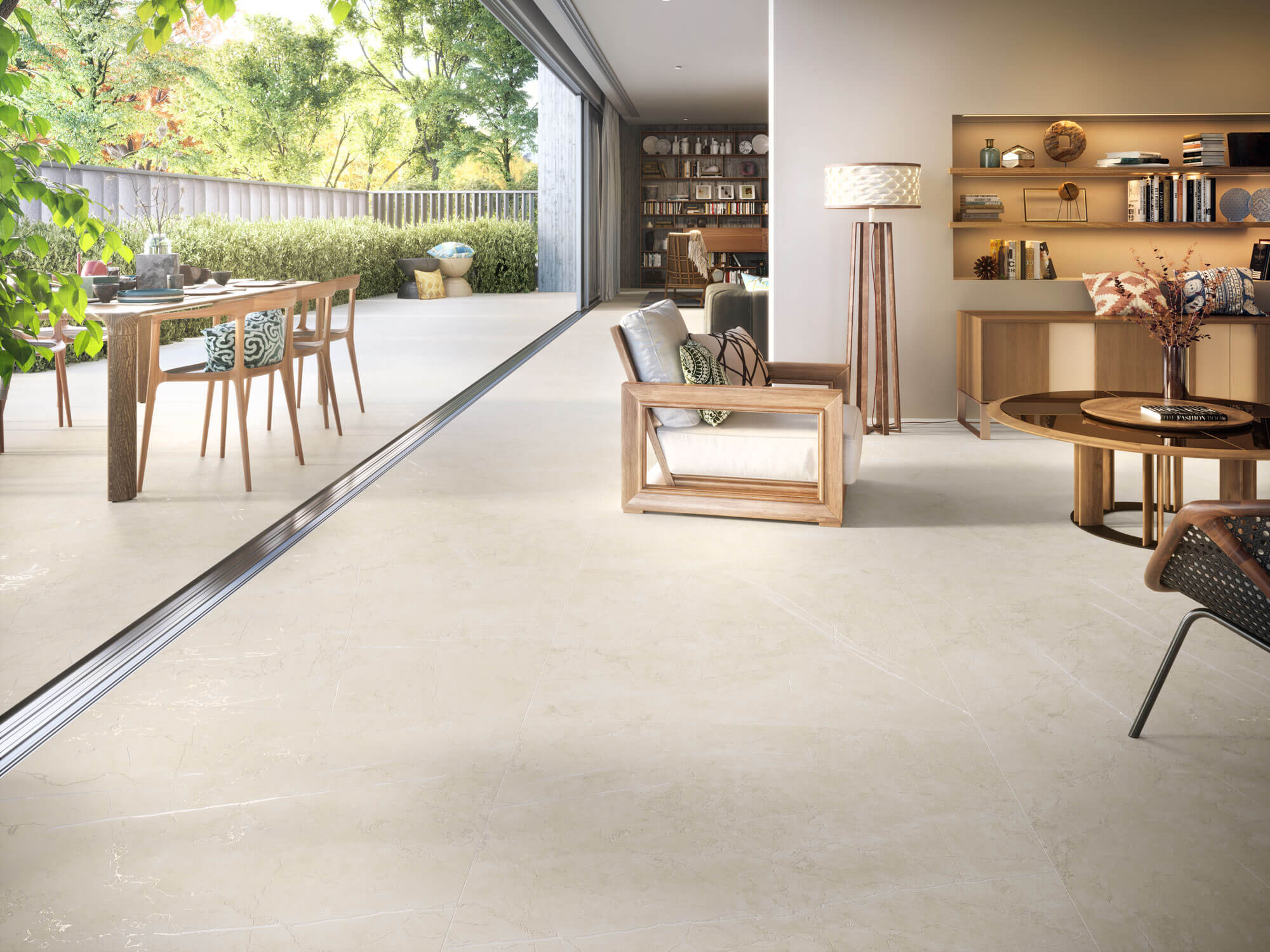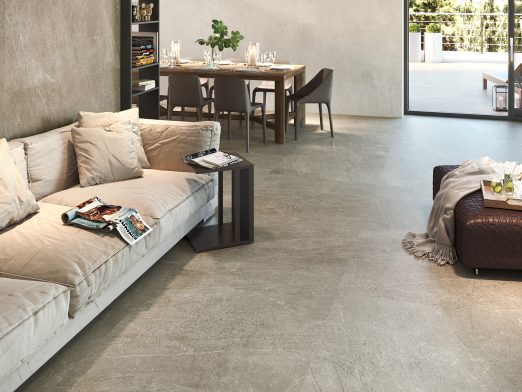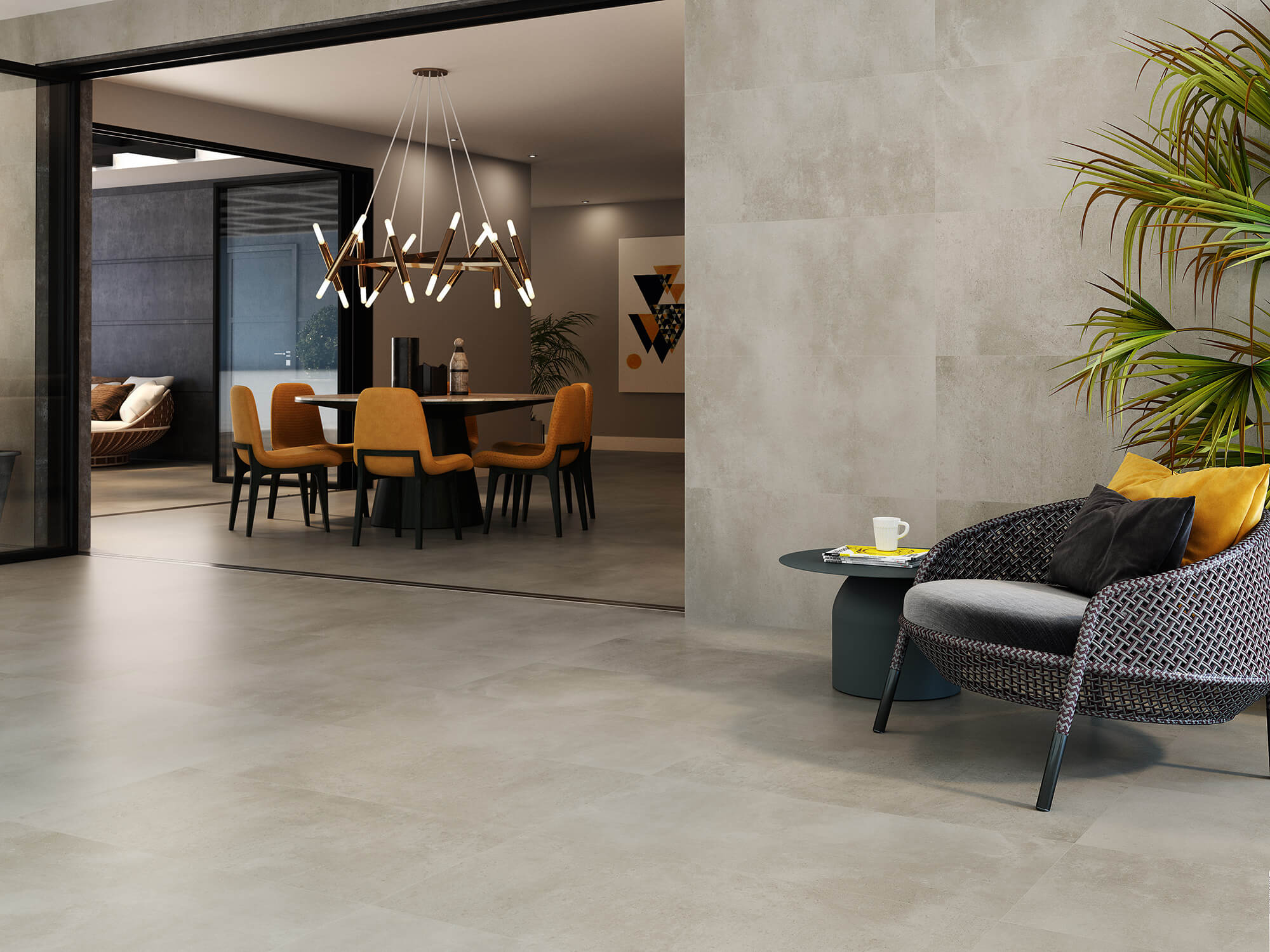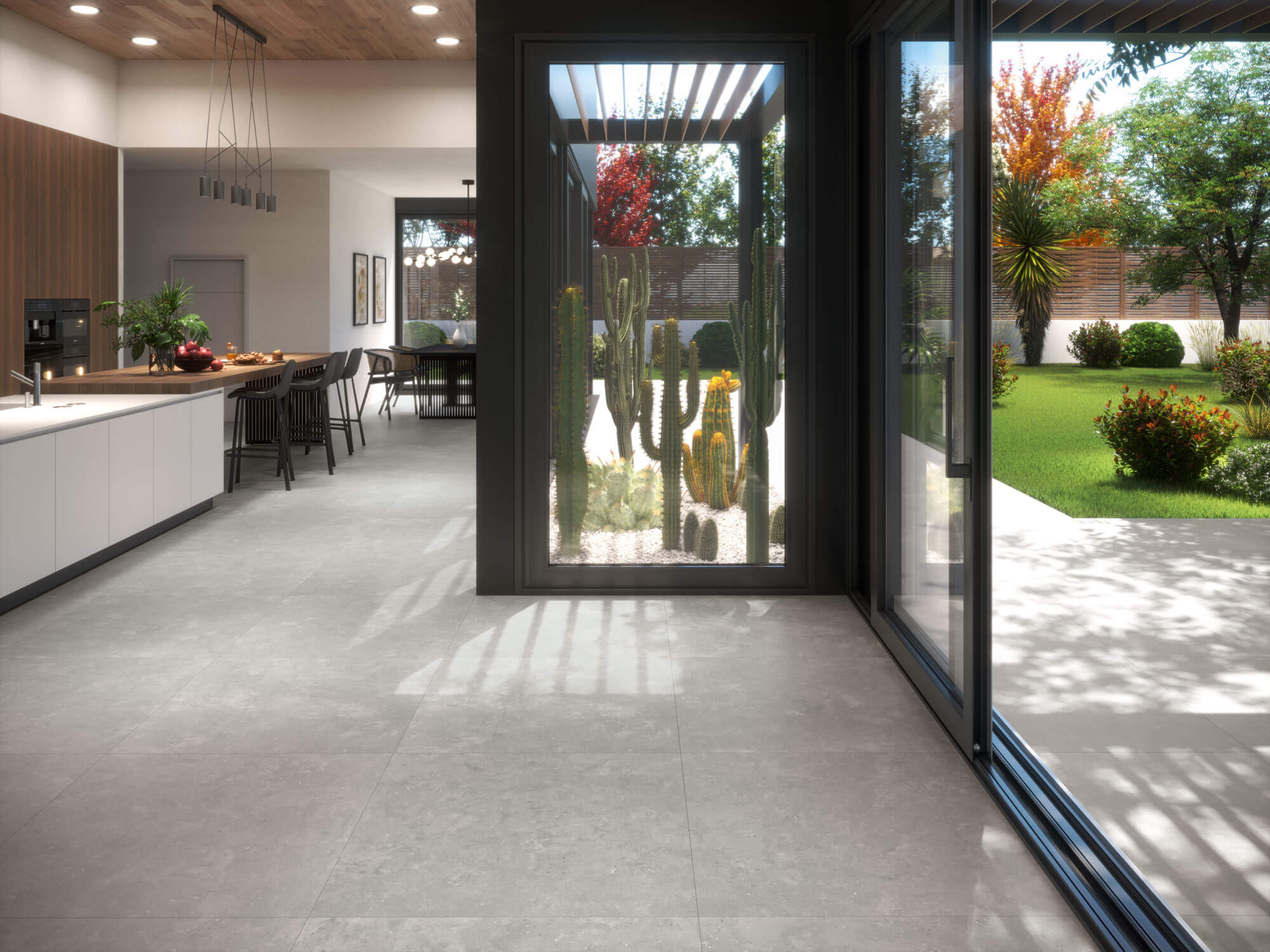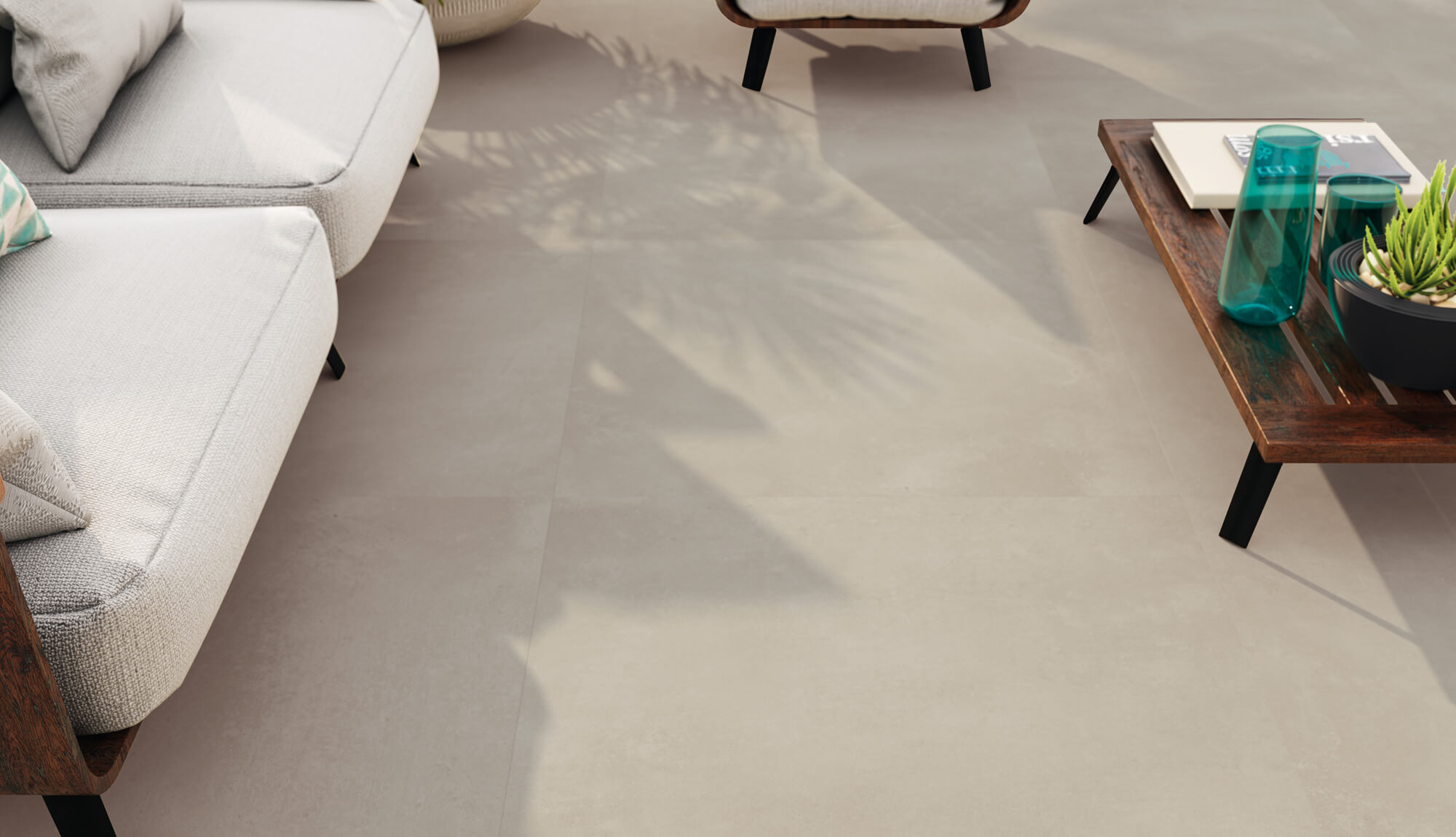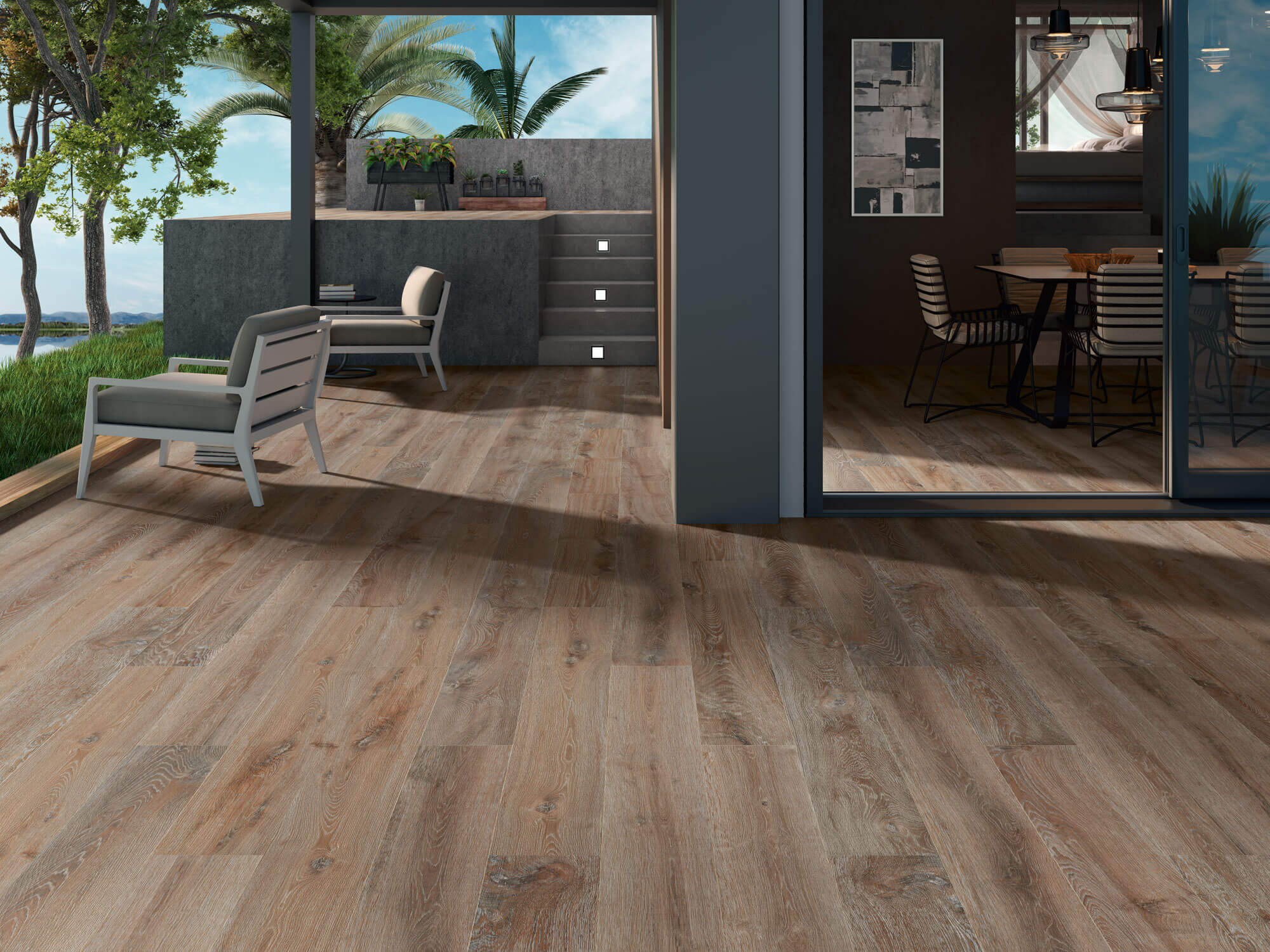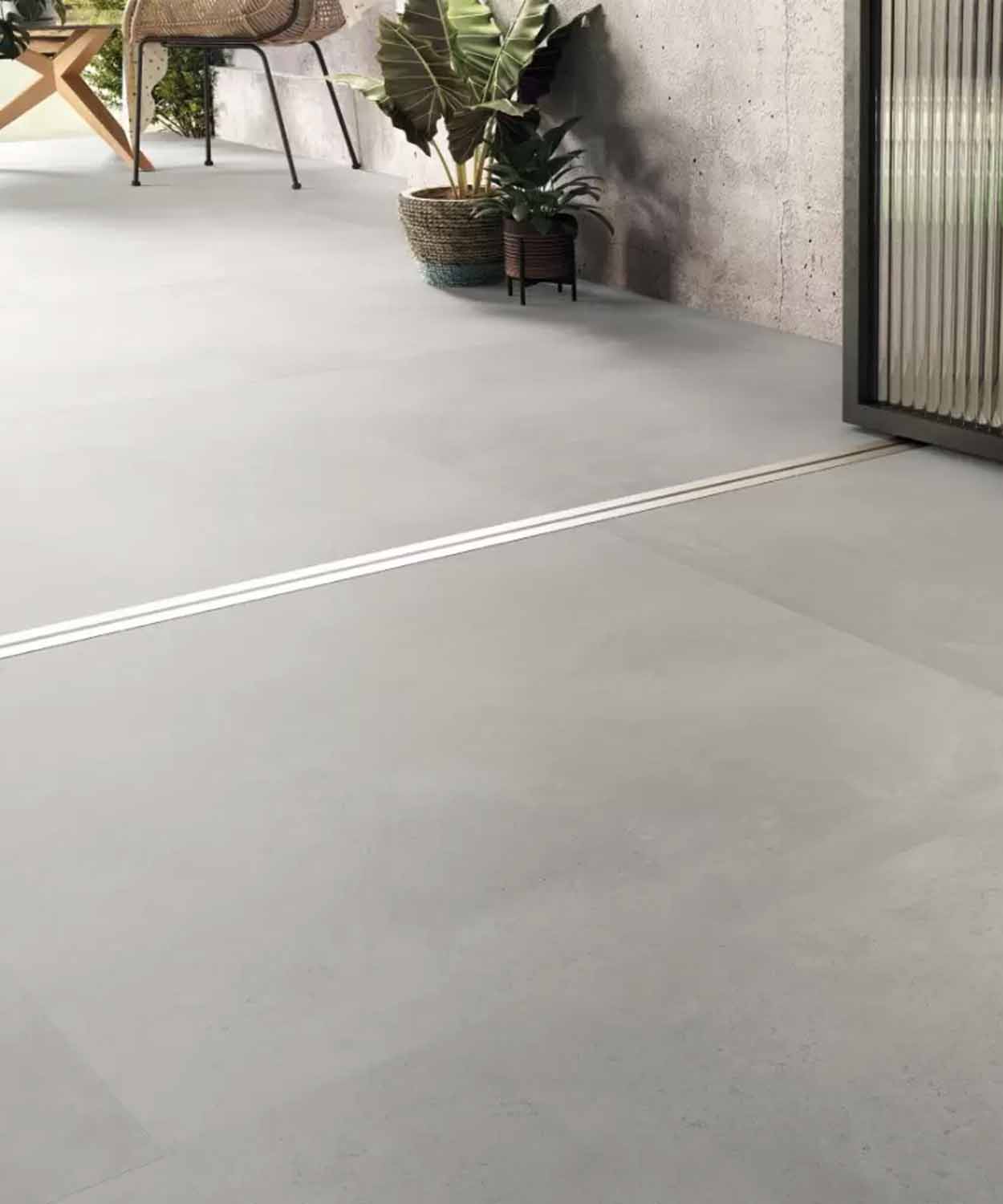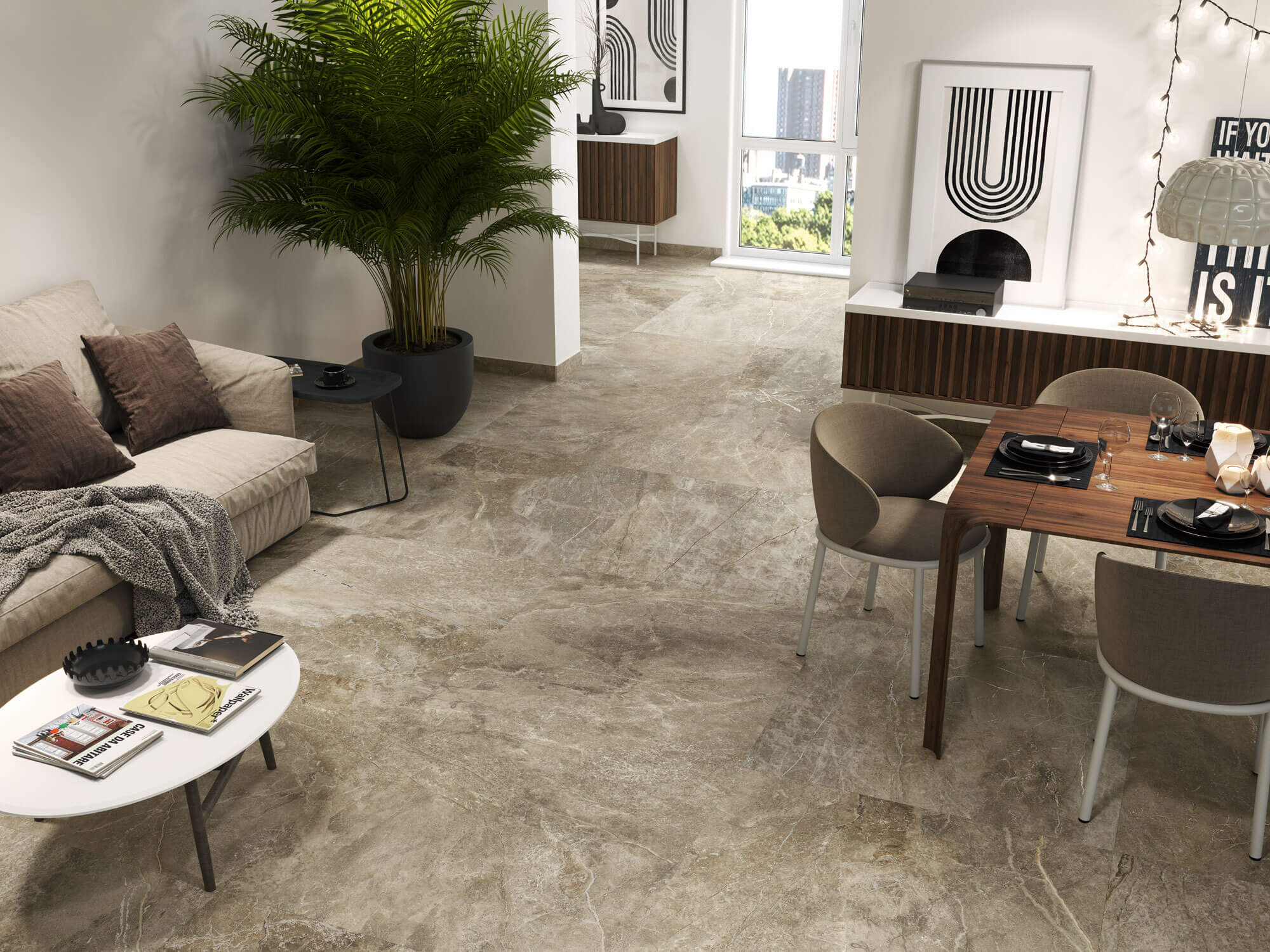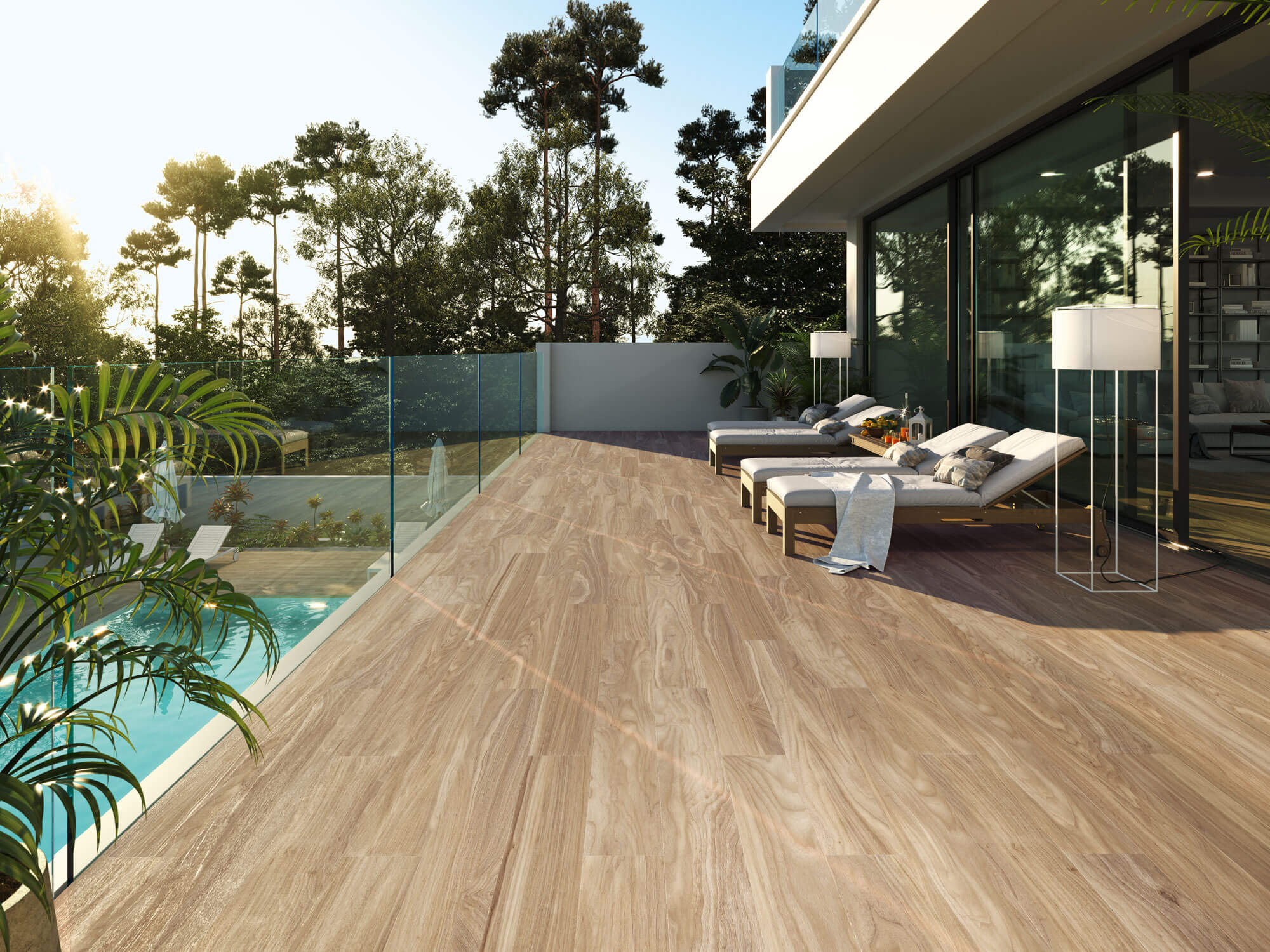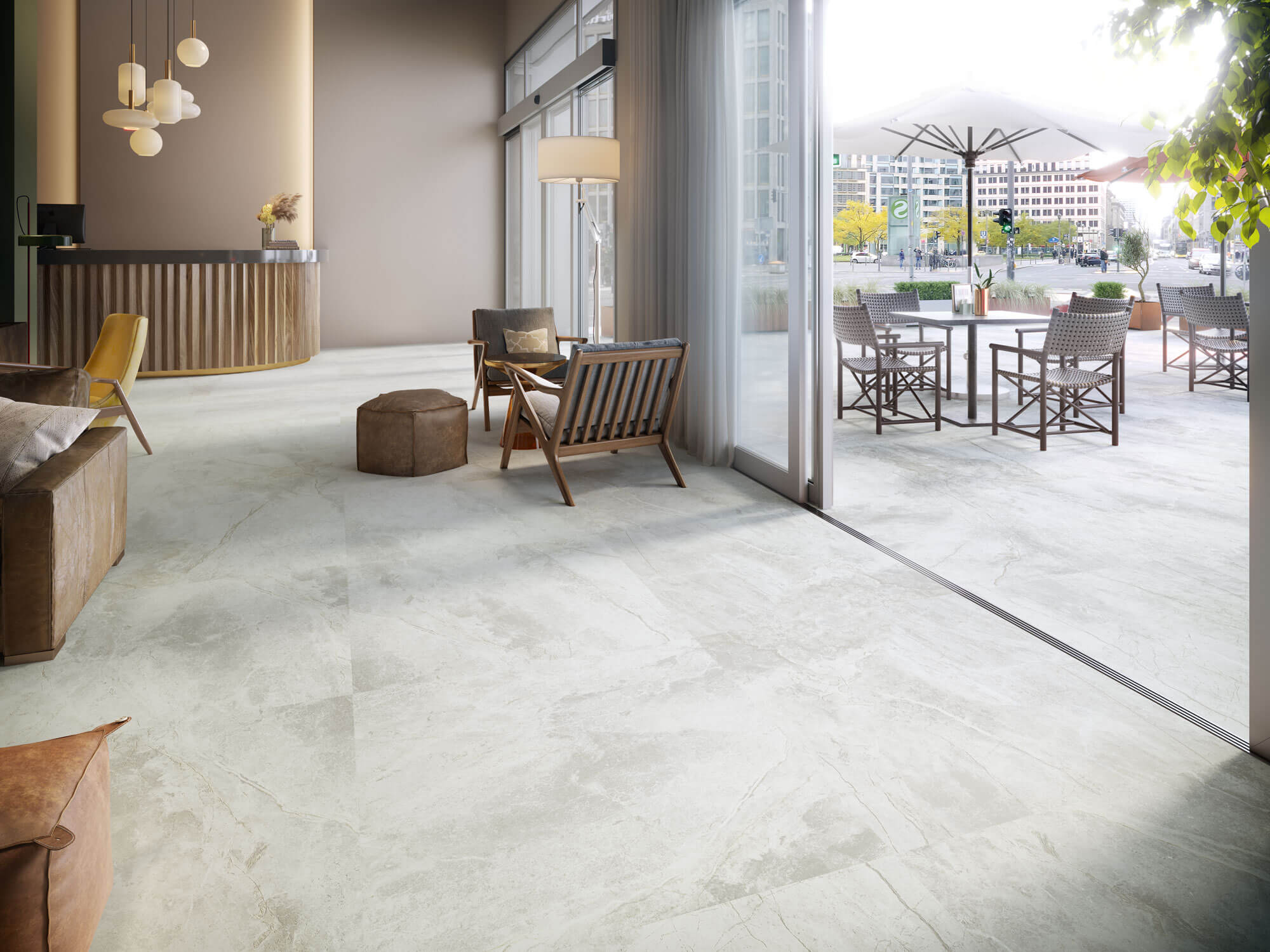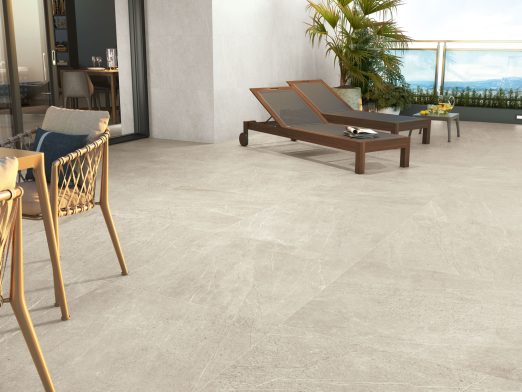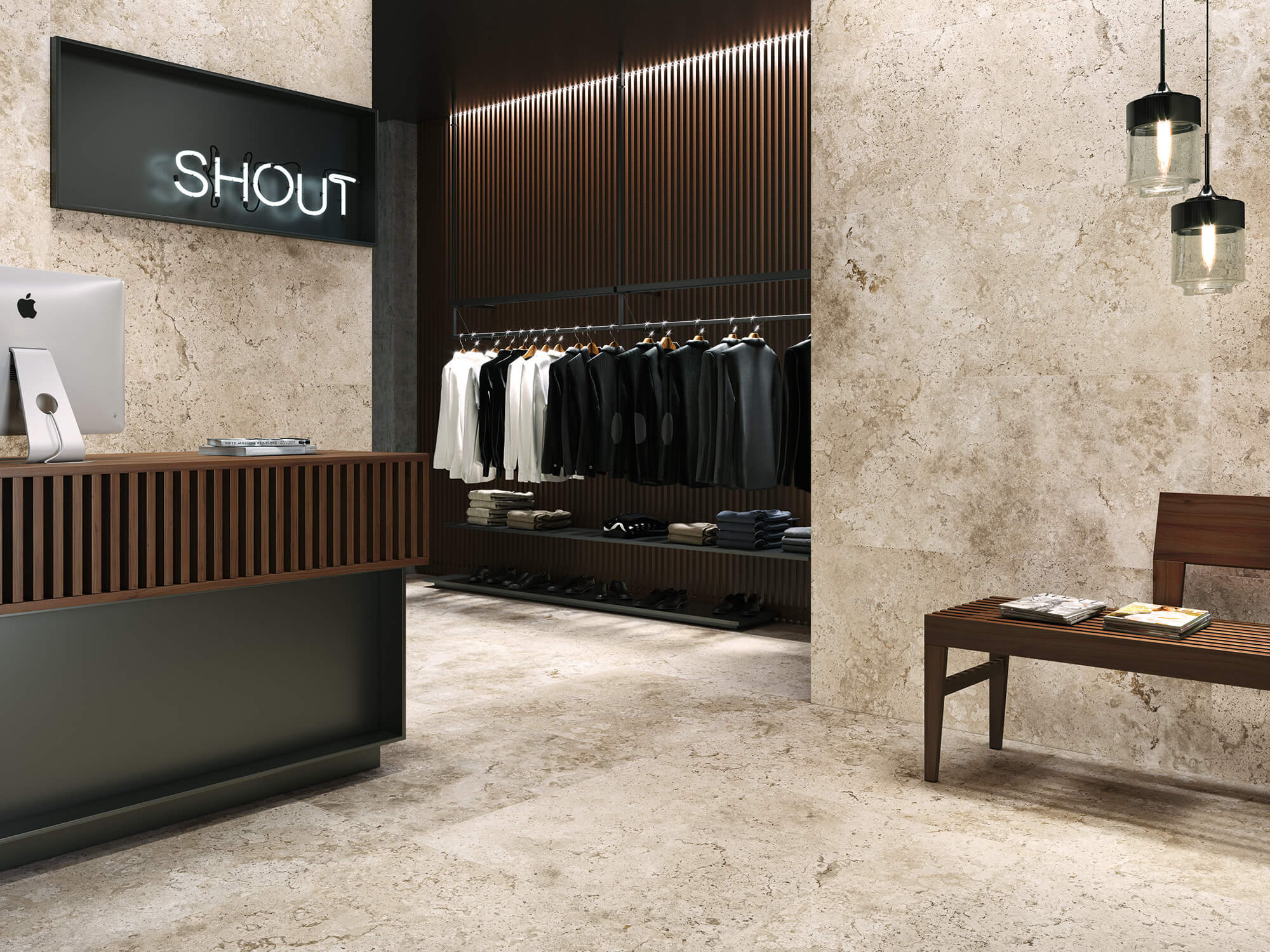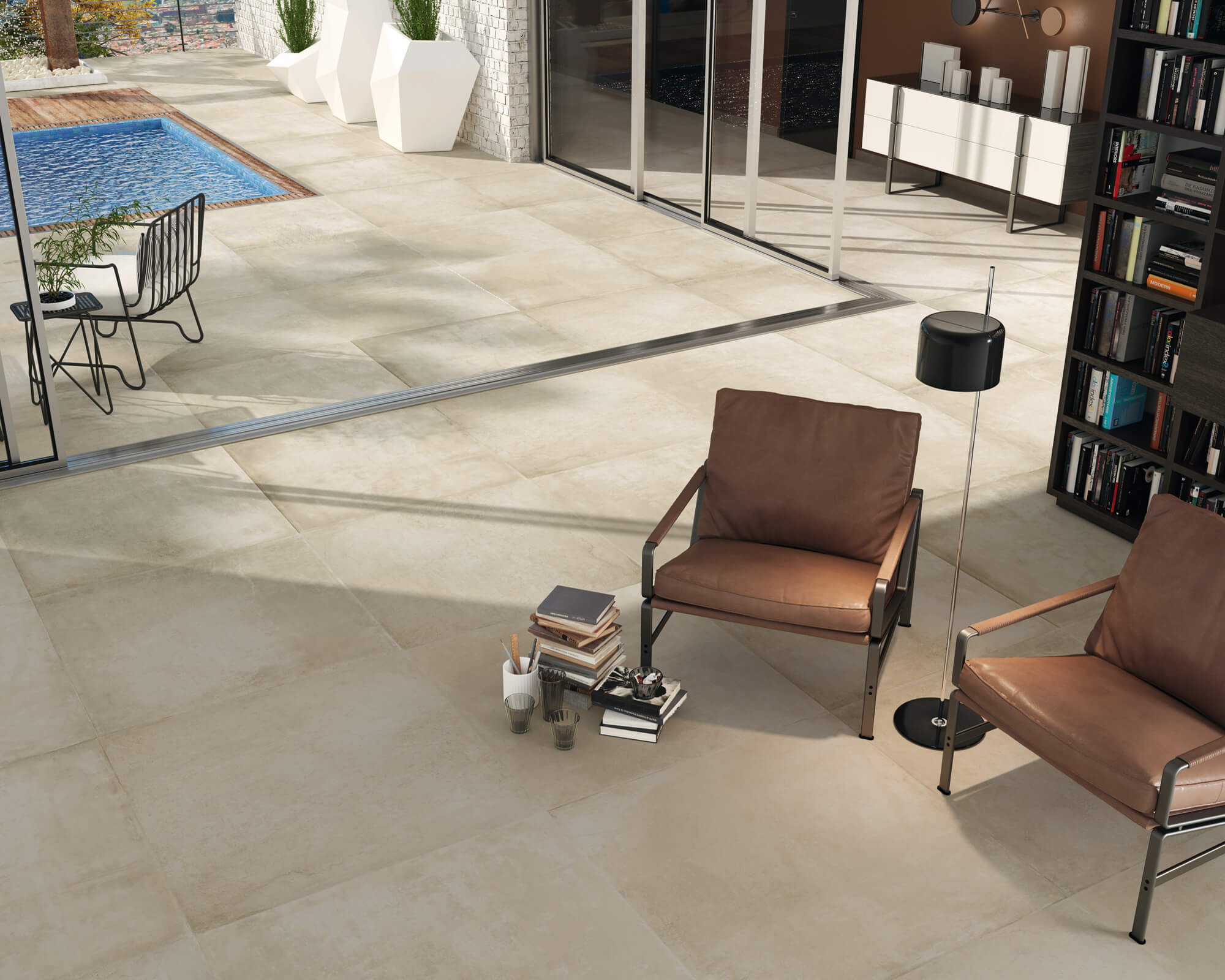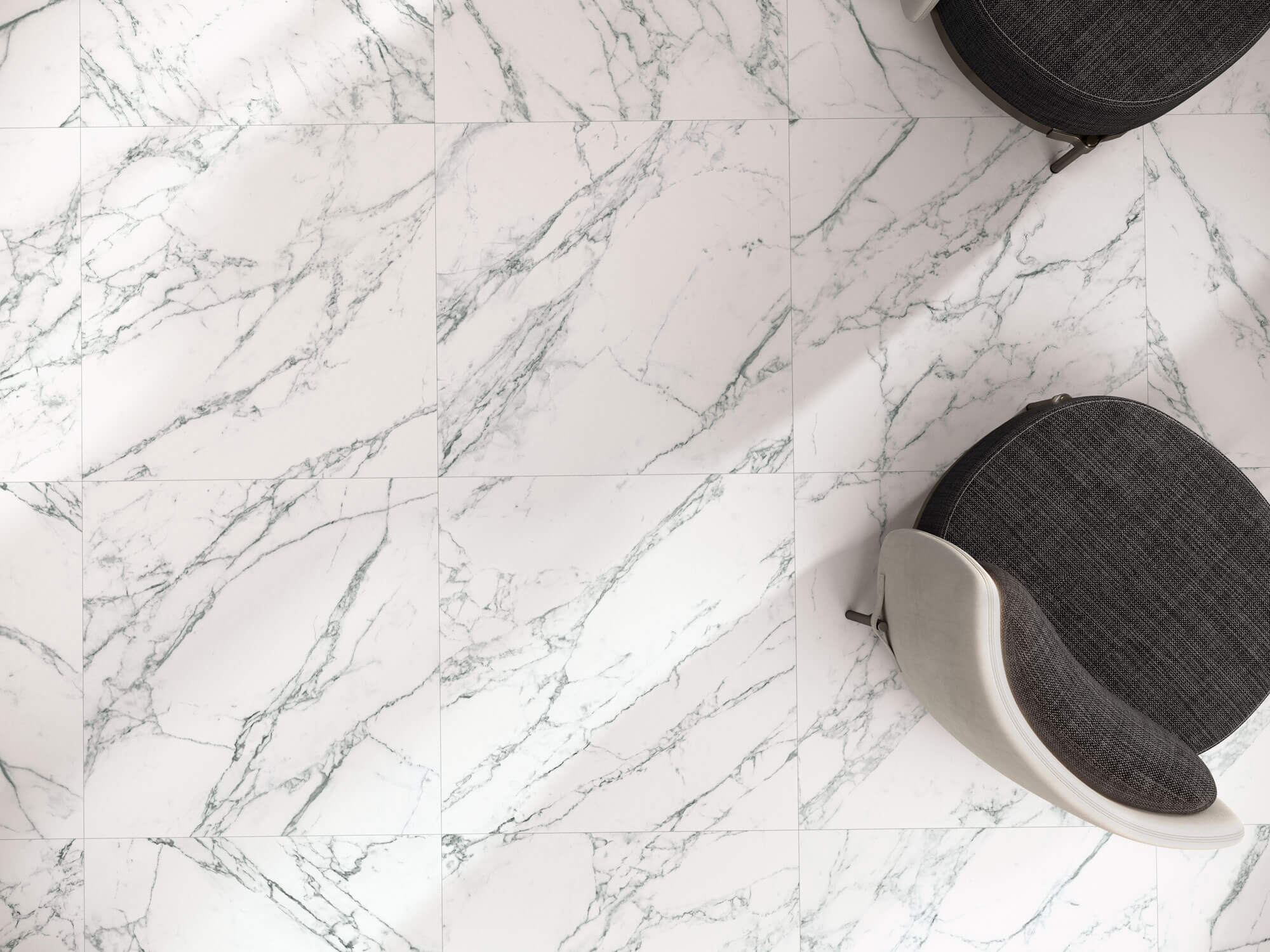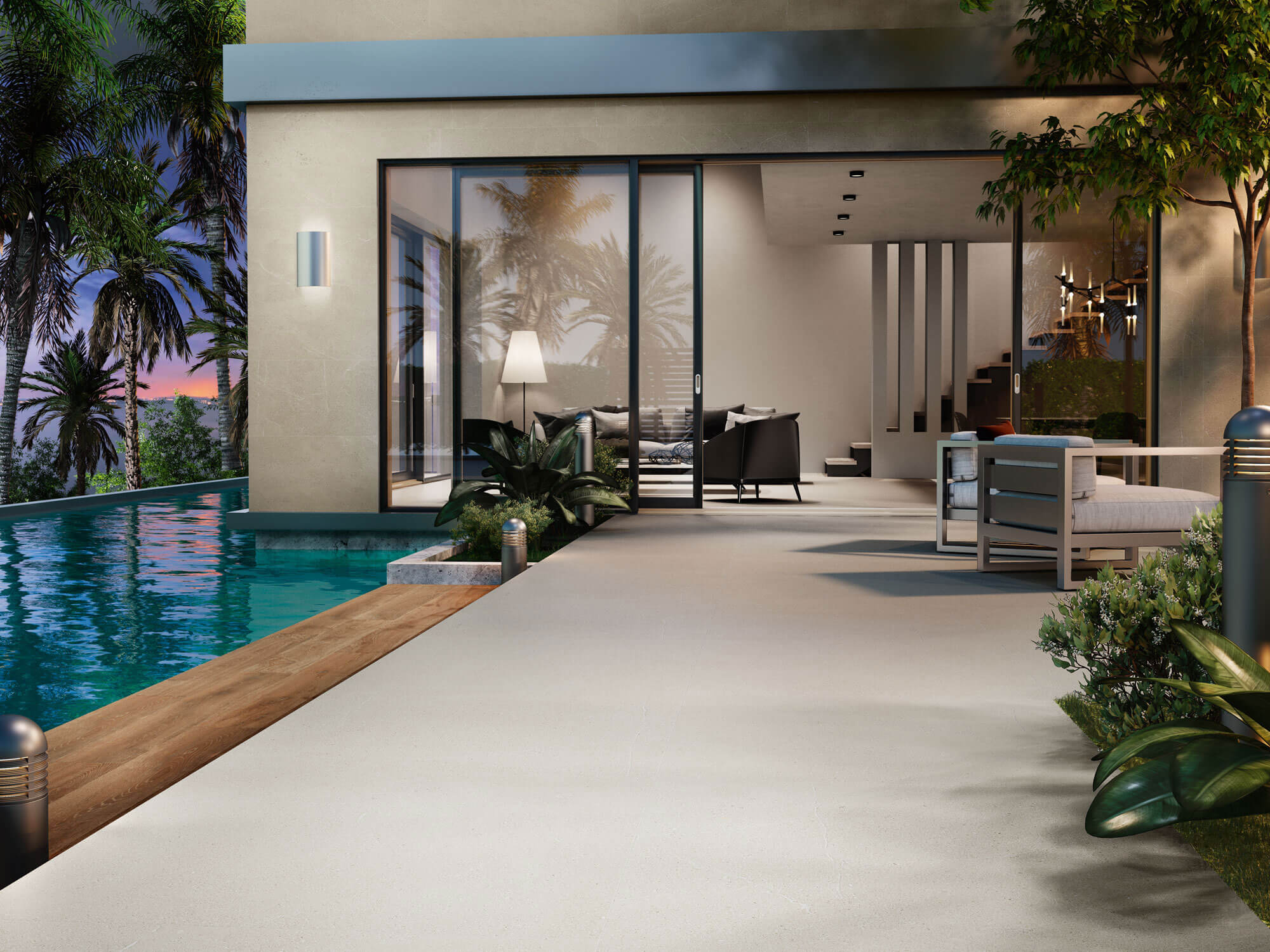Outdoor flooring collections
Outdoor Flooring
The exterior floor is one of the elements that we should pay the most attention to when choosing it.
On the one hand, because its appearance will mark the overall aesthetics of the space, but also because we must choose the right material both technically and practically, with high quality standards.
Find out about all the characteristics and types of outdoor flooring to dress and decorate your outdoor areas.
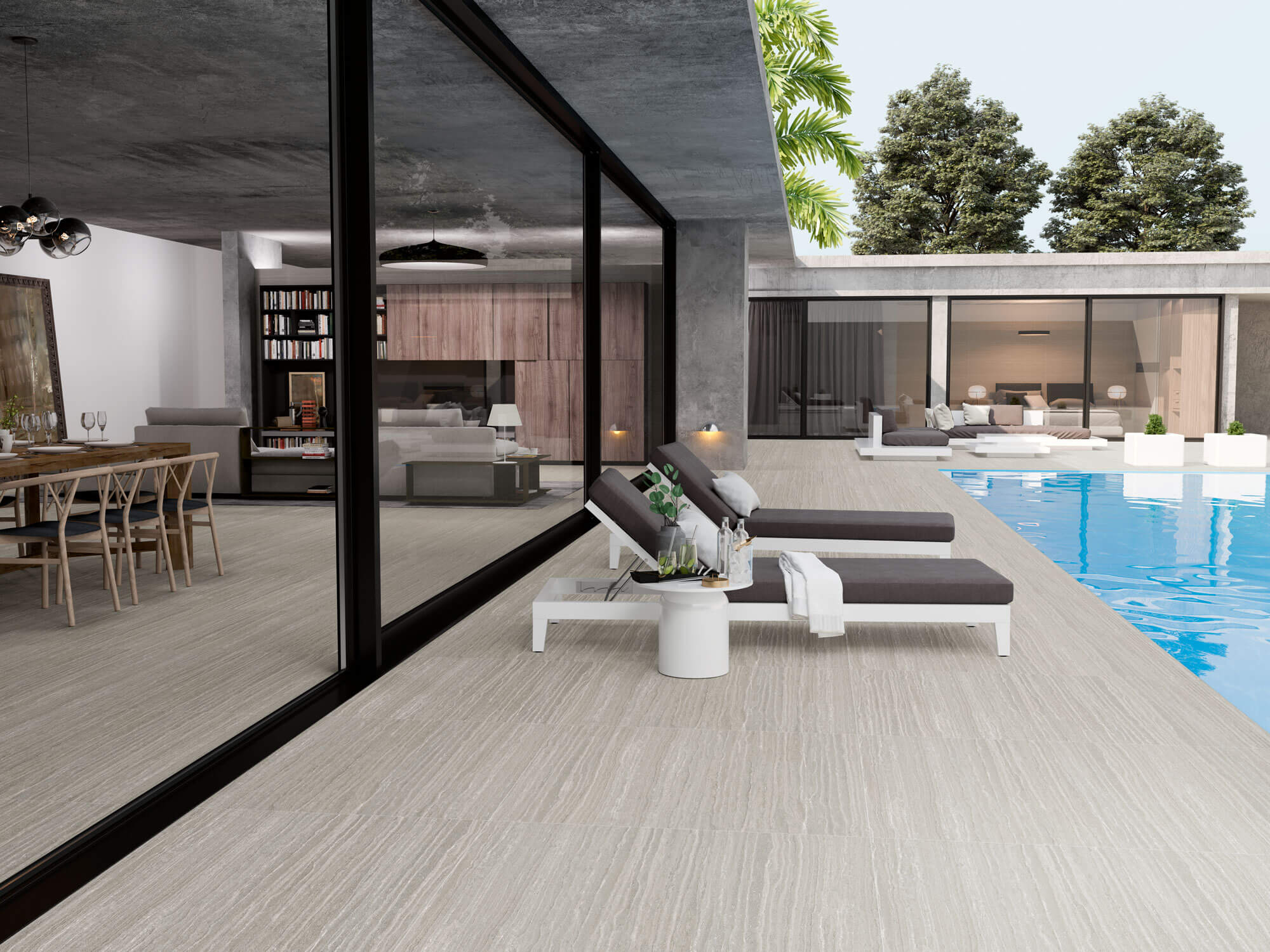
Characteristics of the exterior floor
The main characteristics that an outdoor floor must meet are:
- On the one hand, it must be a very tough and hard material, as it is often subjected to temperature changes and weathering outdoors. This also includes resistance to wear and chemical agents.
- It must also possess waterproofing qualities, to ensure that it remains in good condition for longer, and low water absorption.
- Another very advisable quality is to look for a material that is easy to maintain and clean, which allows us to enjoy our outdoor areas without complications.
- Finally, it is advisable to choose non-slip outdoor flooring to help prevent slips and falls.
Types of outdoor flooring
Non-slip outdoor flooring
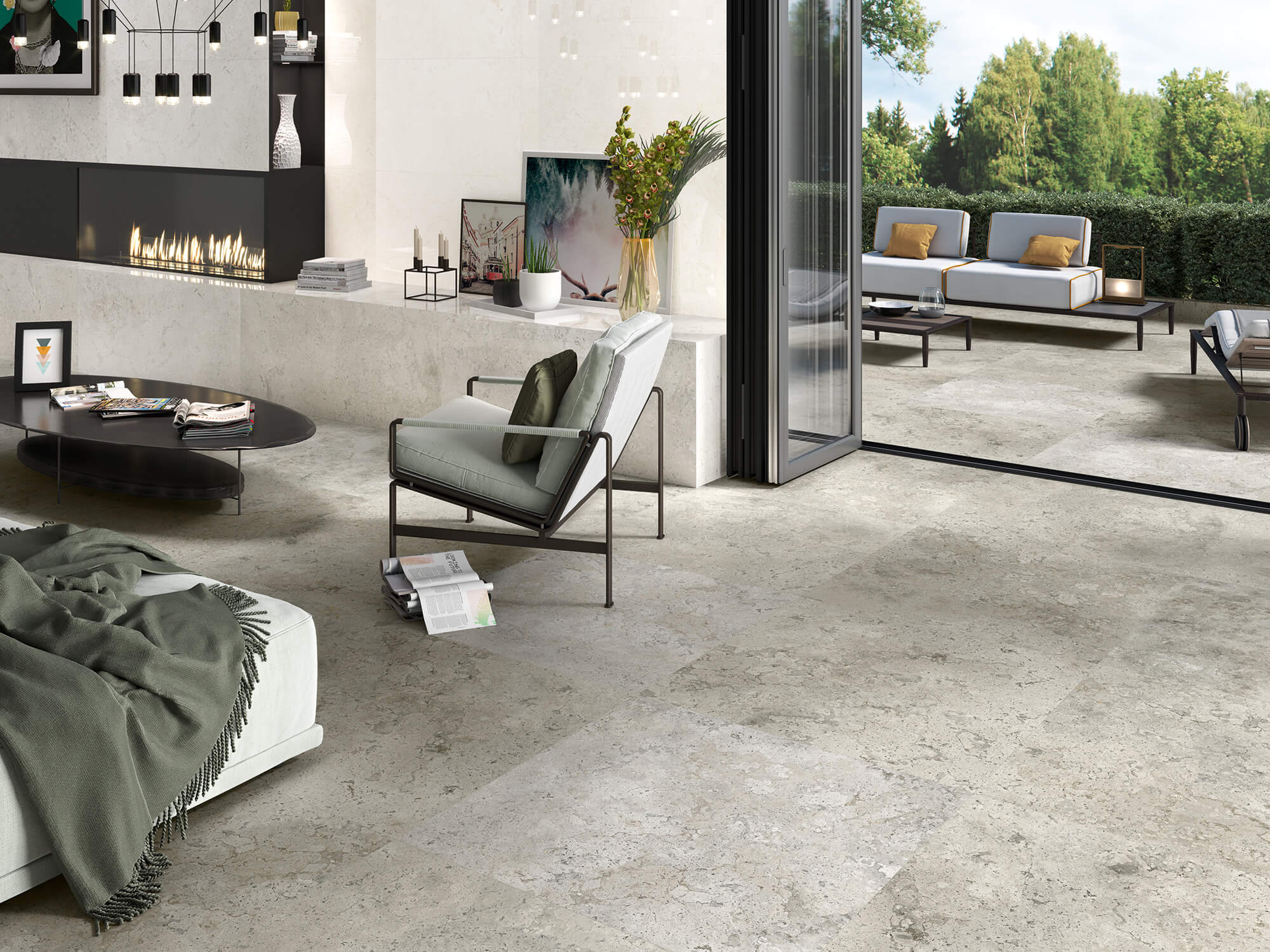
Slip-resistant outdoor flooring is definitely an extra safety requirement for our outdoor installations. terracesbalconies or patios.
Opting for non-slip outdoor flooring will help prevent slips and falls and in turn multiply our sense of well-being outdoors. This is therefore an added value for outdoor flooring.
Imitation wood flooring outside
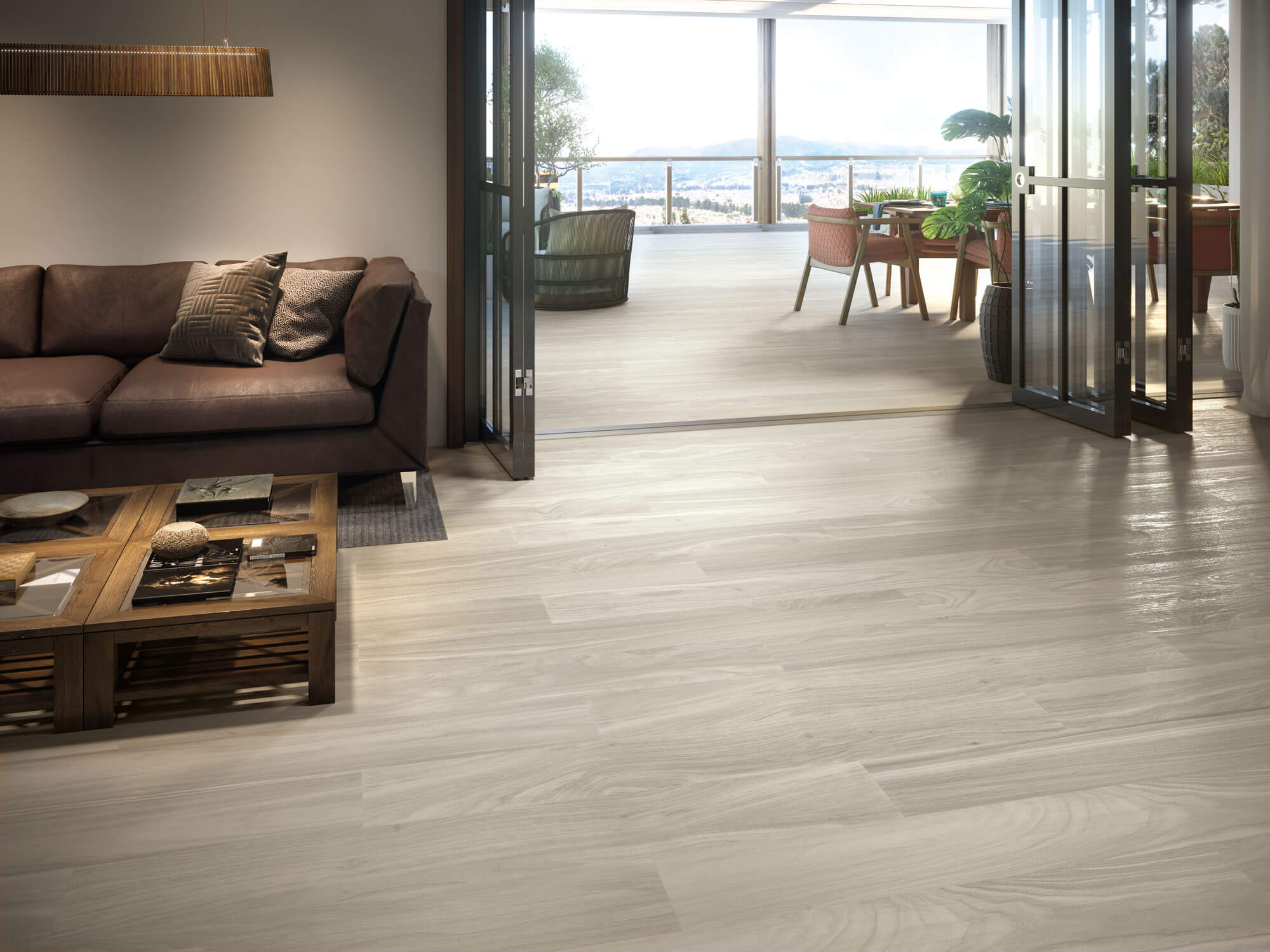
The natural beauty of wood makes it one of the most sought-after aesthetics for dressing all kinds of projects, from contract to residential, both indoors and outdoors.
However, when it comes to outdoor application, natural wood is at a disadvantage because it is not a very durable material, and that is where the imitation wood outdoor flooring comes in, which is made possible by ceramic tiles.
Imitation wood outdoor floor tiles combine the aesthetics of wood with all the properties of porcelain stoneware and give an outstanding result in exteriors.
Outdoor rustic flooring
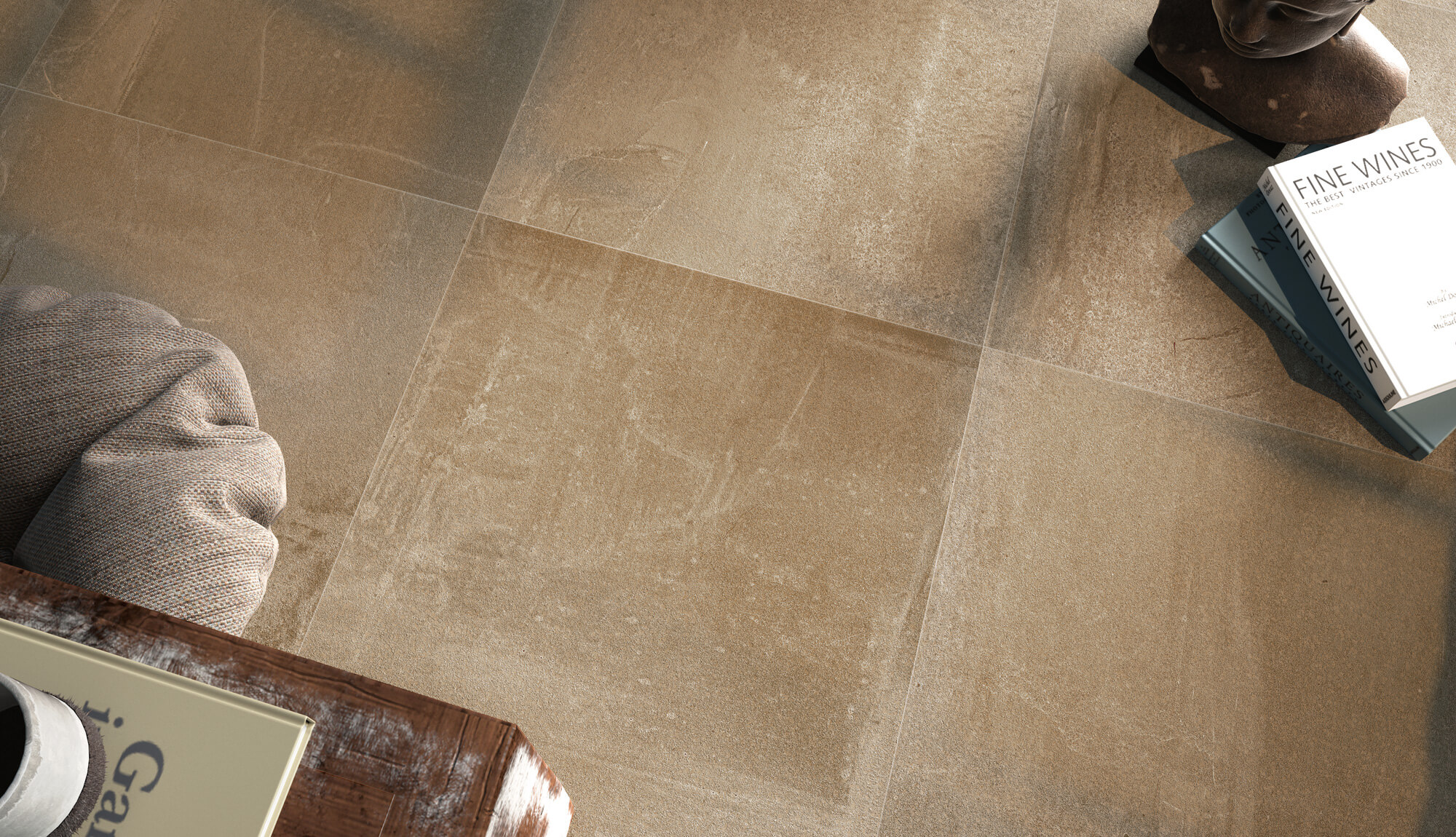
Along with woodgrain outdoor flooring, one of the most popular styles when it comes to outdoor flooring is rustic. Rustic outdoor flooring is a very warm and cosy proposal that connects areas of the house with nature.
Clay imitation, coto or rustic ceramic tiles are very common choices for paving terraces, patios and outdoor gardens.
Although we can also choose natural alternatives such as stone or terracotta, however, given its porosity, it can eventually show stains on its surface.
Porcelain tile floors outside
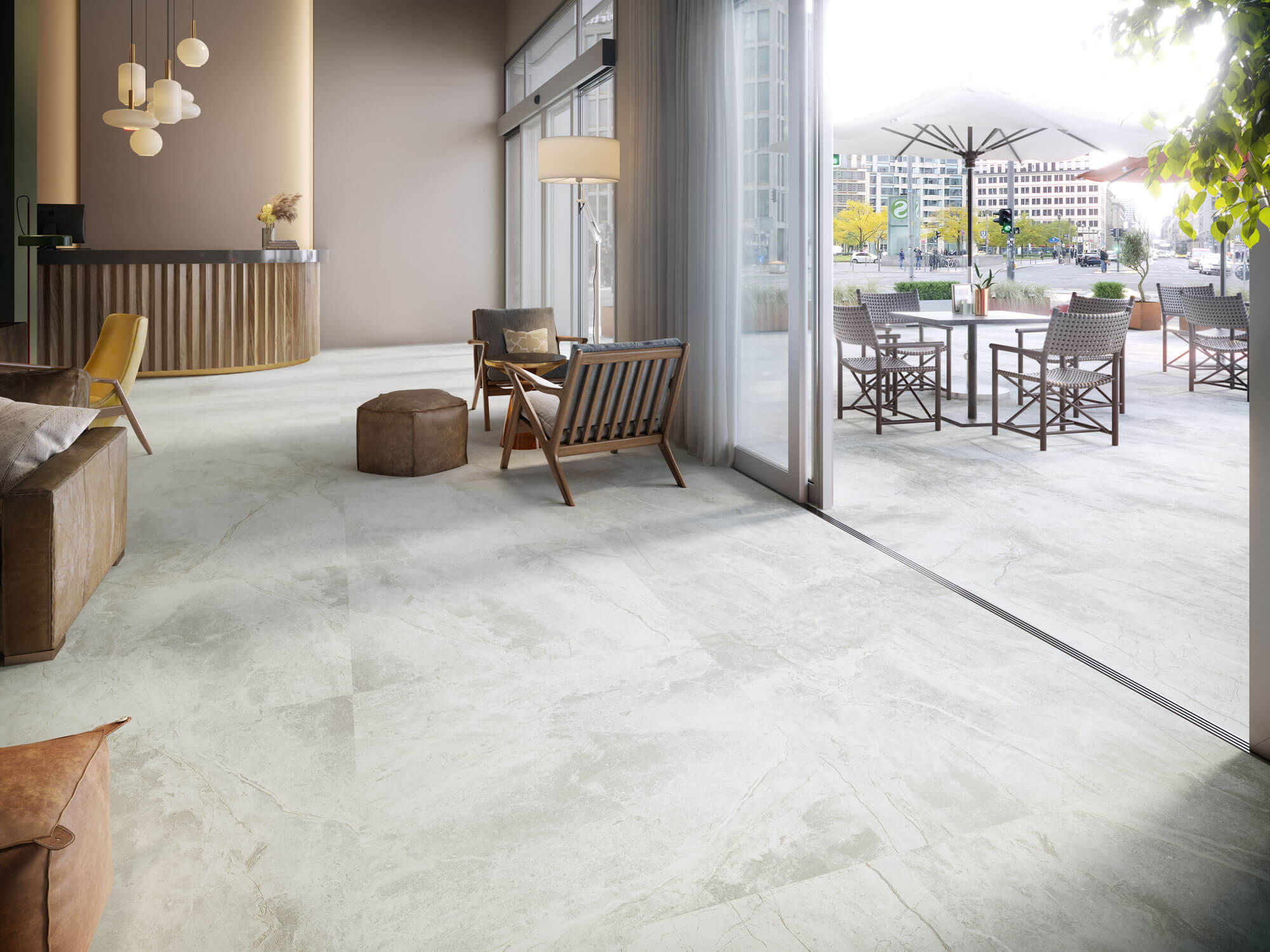
As mentioned above, porcelain stoneware is the best alternative for outdoor flooring due to its many technical advantages as a material.
One of the most important is its low porosity (less than 0.5%), which means that it does not absorb water, neither from the ground nor from rain, preventing it from breaking in the event of frost or sudden changes in temperature.
The non-porosity of outdoor porcelain floors also makes them resistant to stains and chemical agents, protecting their surface and appearance for longer, unlike other porous materials.
On the other hand, its compact and hard structure makes it an ideal material to resist scratches, knocks or any kind of daily outdoor situations, without wearing out.
Outdoor ceramic flooring is a material that is very easy to maintain and clean, which is a great advantage. And, of course, the wide variety of styles, formats and appearances available guarantee its success in any space.
Exterior flooring applications
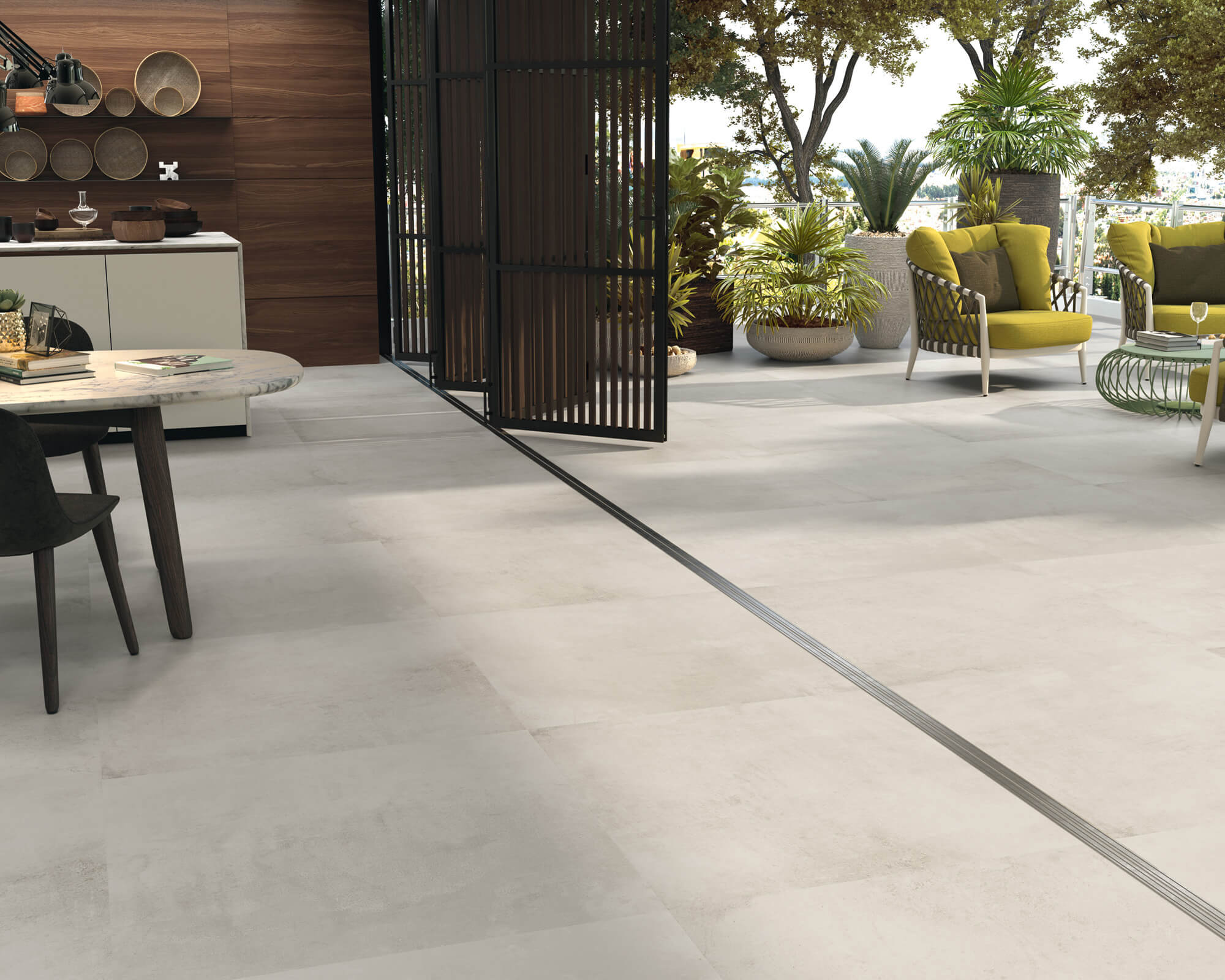
Outdoor garden flooring
If you have a garden at home, decorating it by adding beautiful outdoor garden flooring is a good idea.
There are many varieties of outdoor garden decking, including outdoor porch decking that can be combined with the interior of the home to create uniform and integrated spaces.
Outdoor patio flooring
The same goes for patios, if we are lucky enough to have one in our home. The current trend in the world of interior design is to choose the outdoor patio flooring to match the interiors of the house.
Global projects, well combined and in tune with each other, are the most fervent bet, especially if they connect us with the outside world.
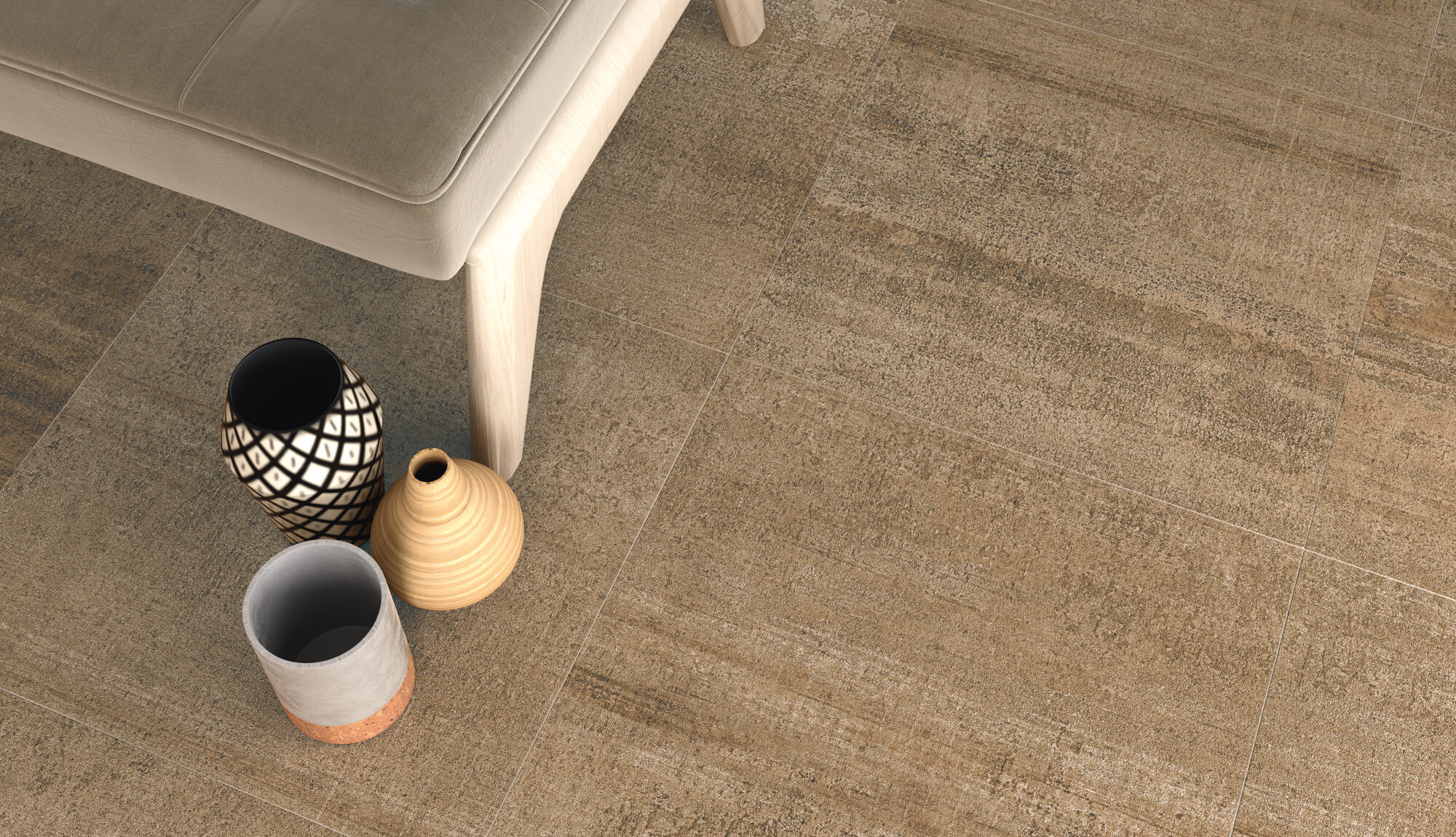
The best outdoor flooring
There are few outdoor flooring materials that meet all of the above characteristics, but one of them is porcelain stoneware, which is why it is considered the best outdoor flooring by architects and interior designers.
The above technical qualities are the great strength of outdoor flooring, not to mention the endless aesthetic possibilities offered by this material.
Its versatility allows it to adopt multiple appearances (ceramic wood, ceramic cement, rustic ceramic, decorative ceramic...), formats, shades and finishes, which guarantees complete adaptability to the space and your needs.
FAQs
To level a terrace floor or garden, the elementary tools and materials are a leveller and mortar.
However, depending on the condition and extent of the floor to be levelled, the materials to be used and the system may vary slightly. For example, it is not the same job to lay outdoor flooring on top of soil as it is to level the floor on top of a previous screed.
Therefore, in order to know how to level a specific exterior floor in the most optimal way, it is advisable to contact a tiling professional who can carry out the work with a quality result.
How to lay outdoor flooring is one of the first questions to take into account when renovating a terrace, patio or garden. When it comes to outdoor paving, the material to be laid and the adhesive to be used are equally important.
Therefore, if you are wondering how to tile your outdoor floor, the main recommendation is to contact the flooring manufacturer to ask for a list of recommended materials as adhesive.
Once we have the material, we must first level the ground, then prime the tiles and mix the adhesive.
We will lay the tiles with the help of a rubber mallet and, when all the tiles are laid and glued, the last step will be to apply the grout.
The basic trick to knowing how to clean porous outdoor floors lies in the materials used.
A quality microfibre mop, short bristle brushes and the use of neutral PH soap with warm water are some of the key elements in working out how to clean a porous outdoor floor.
How can we help you?
